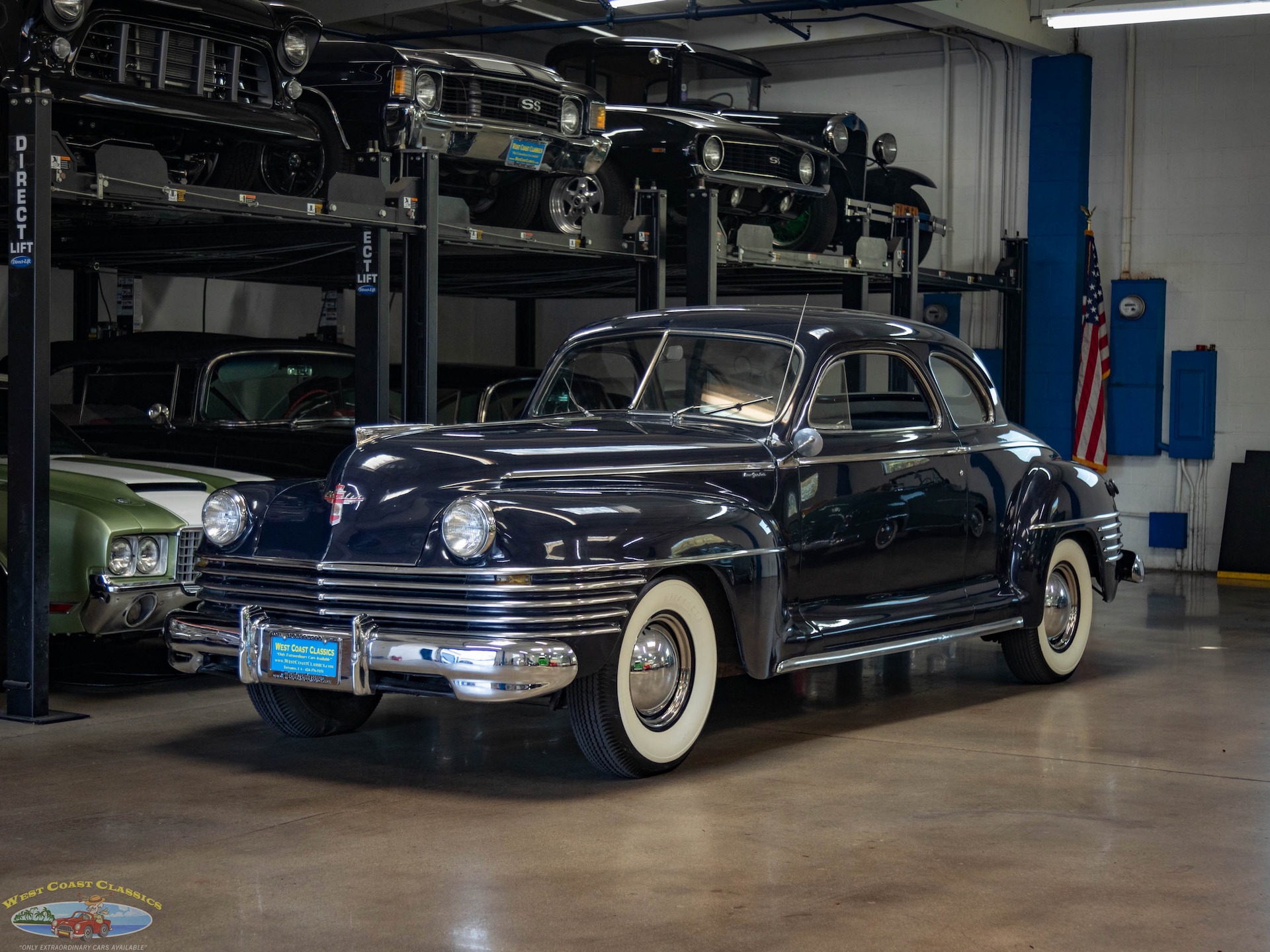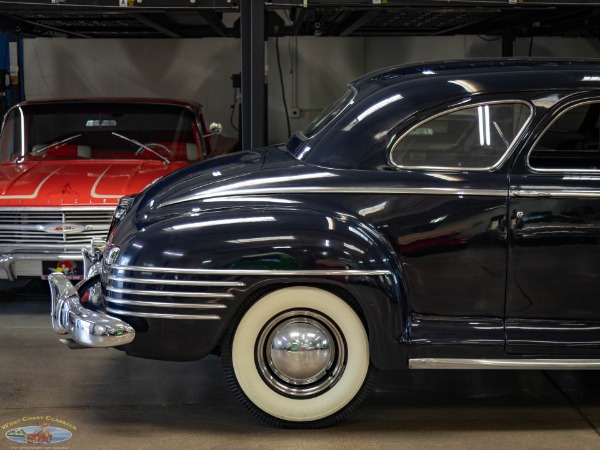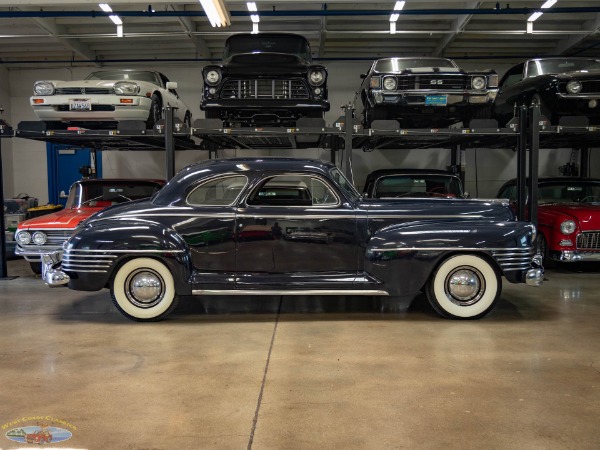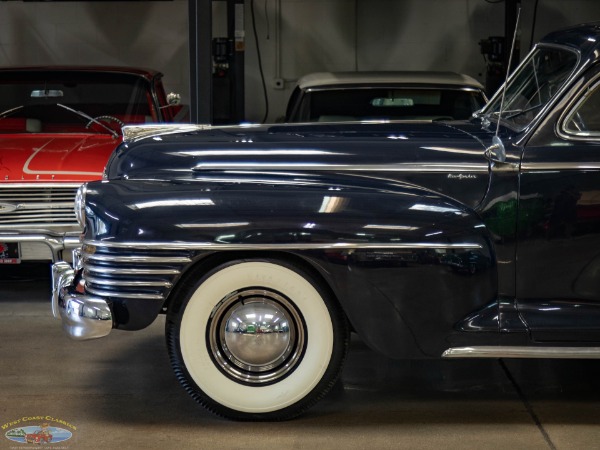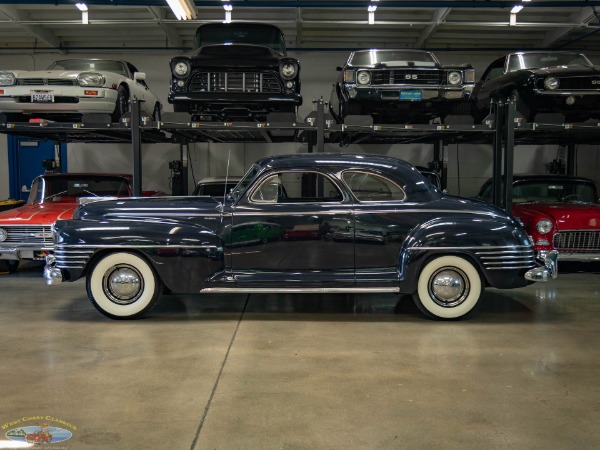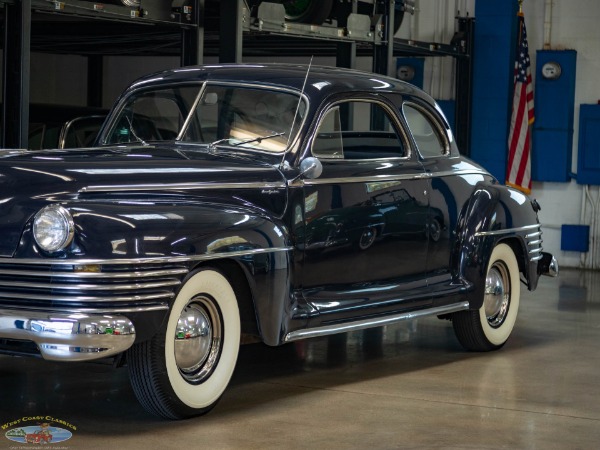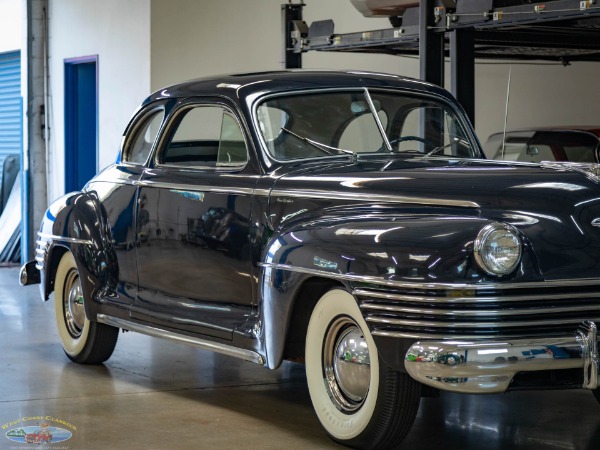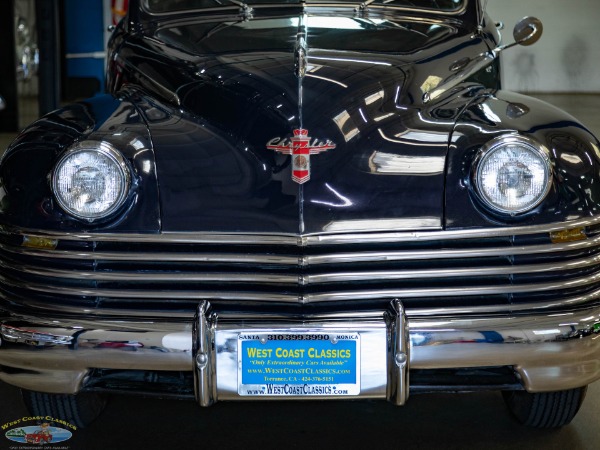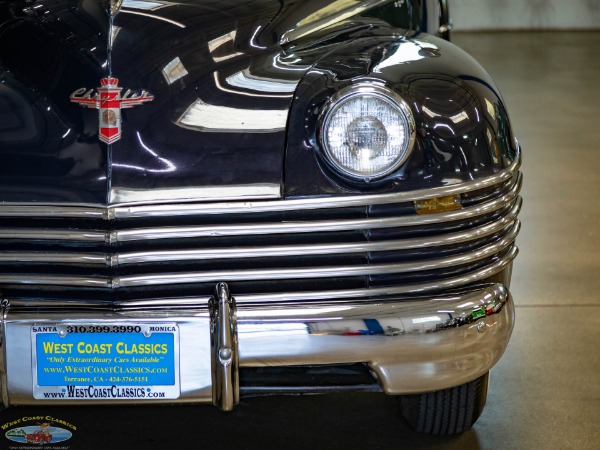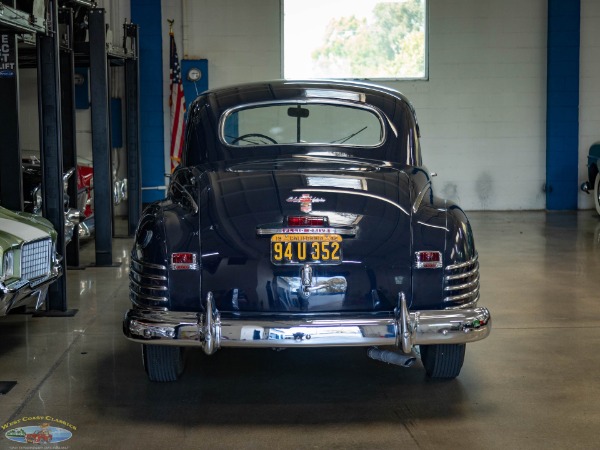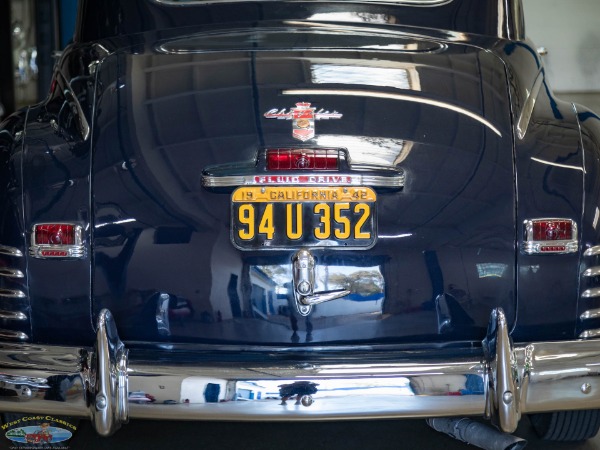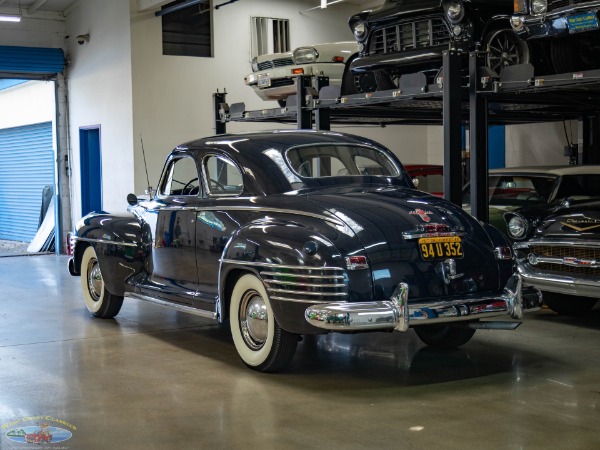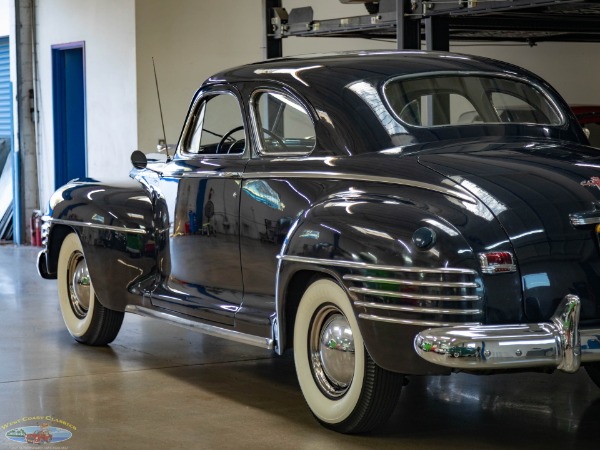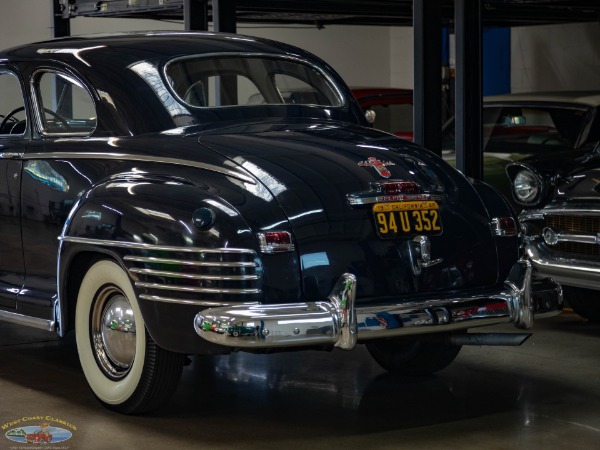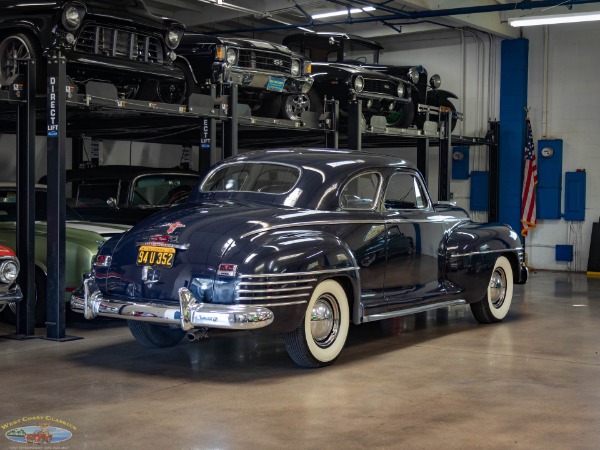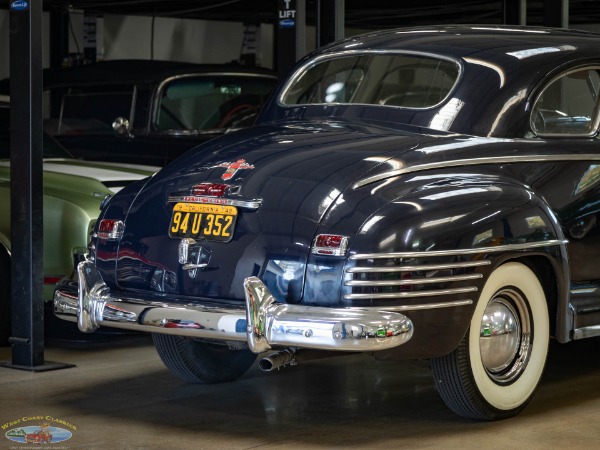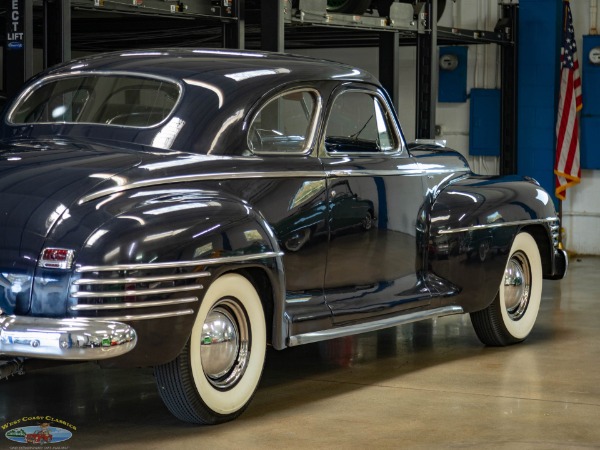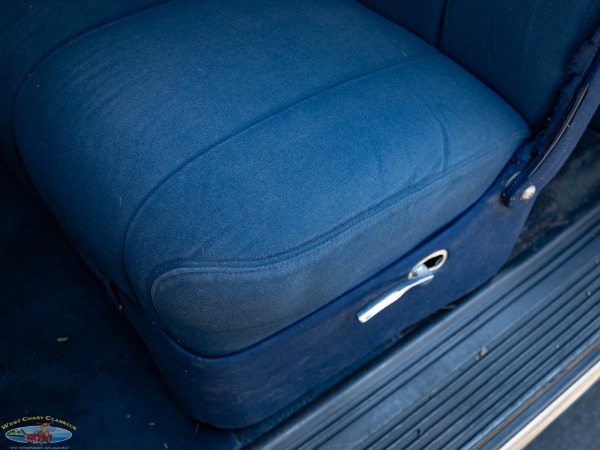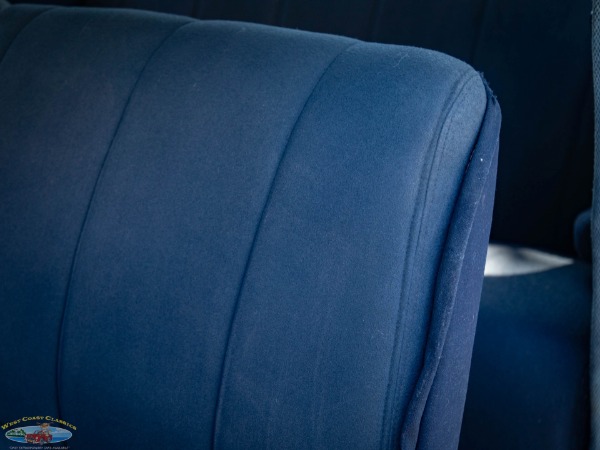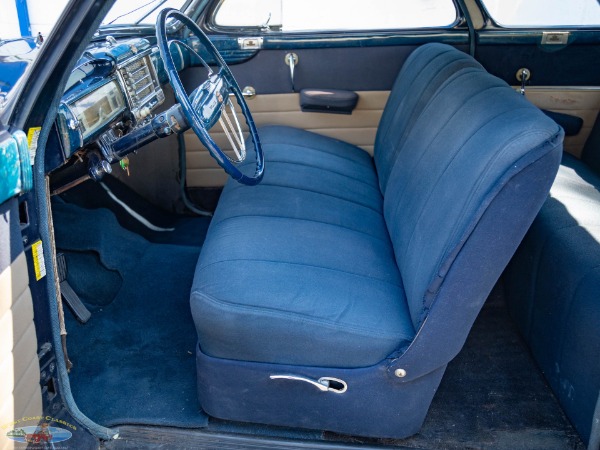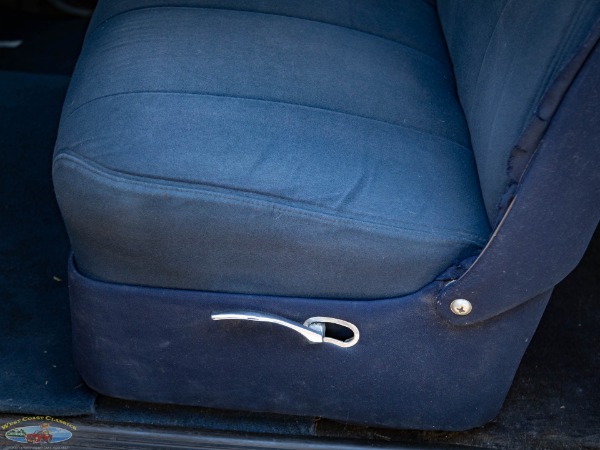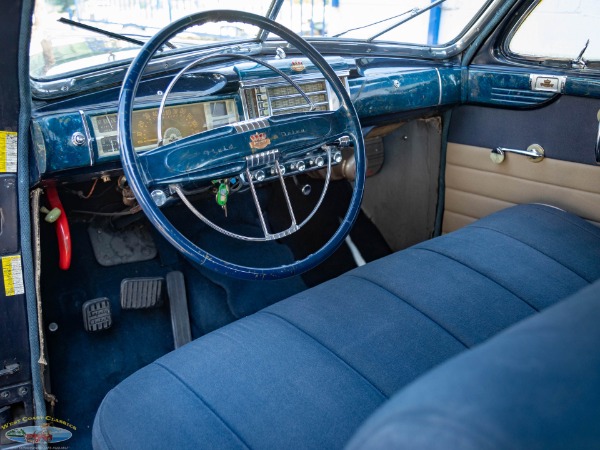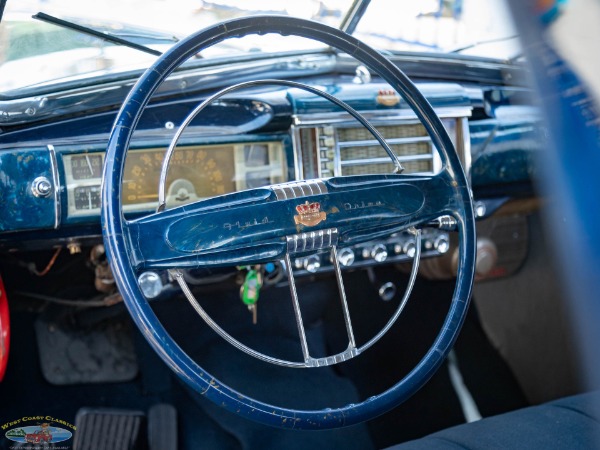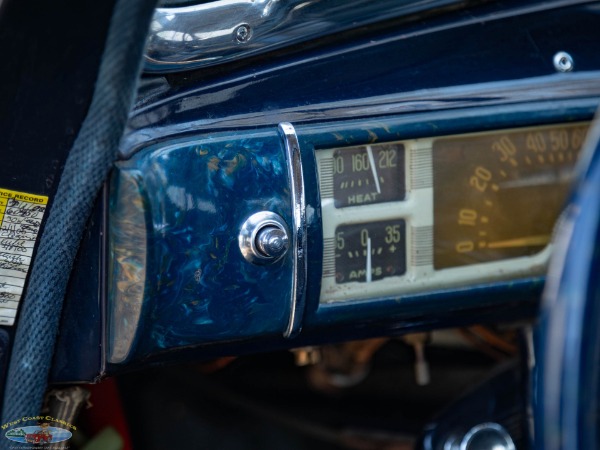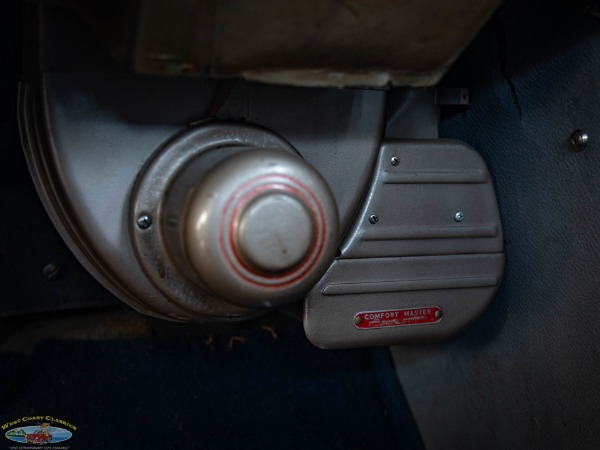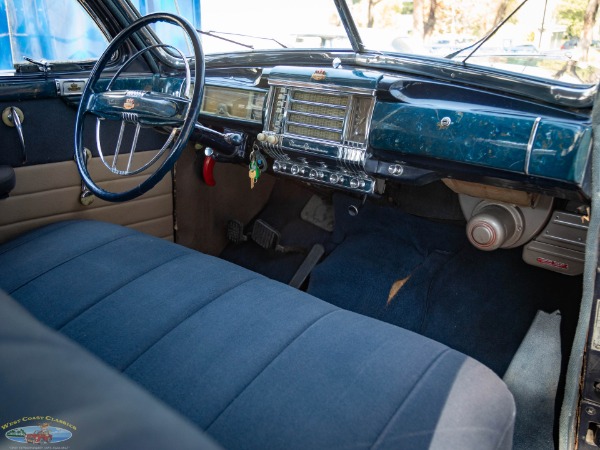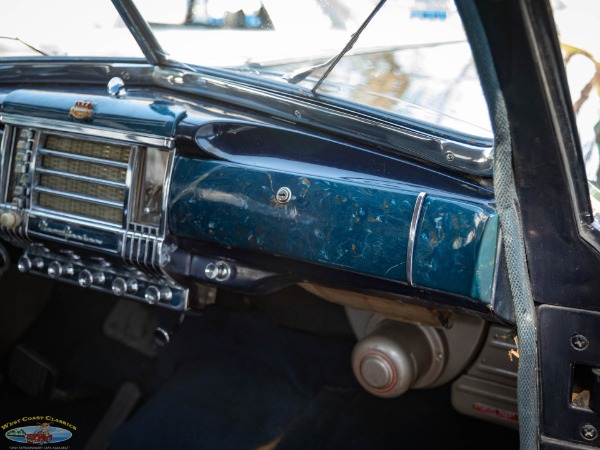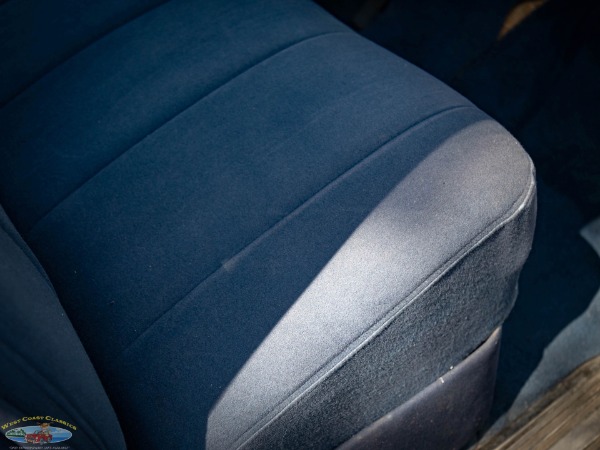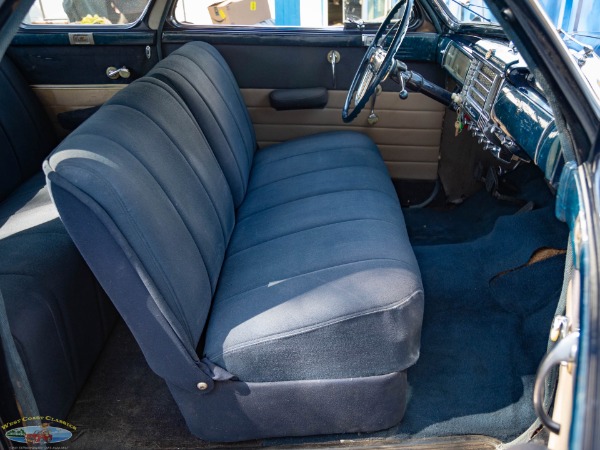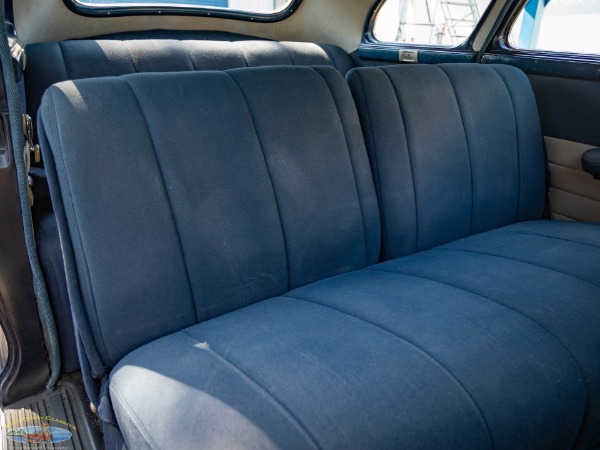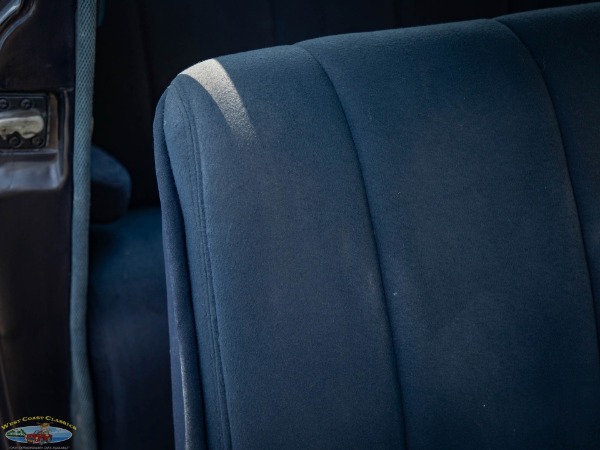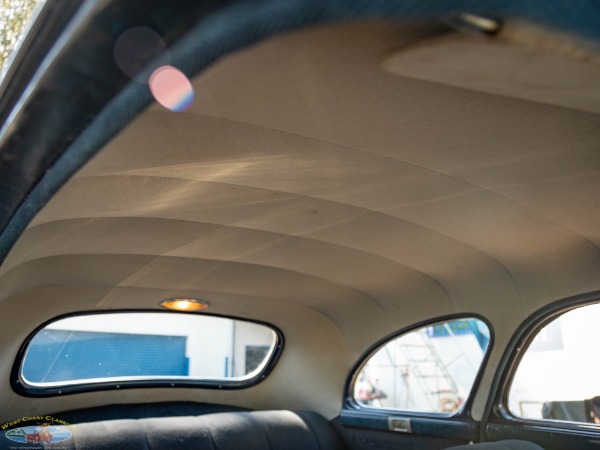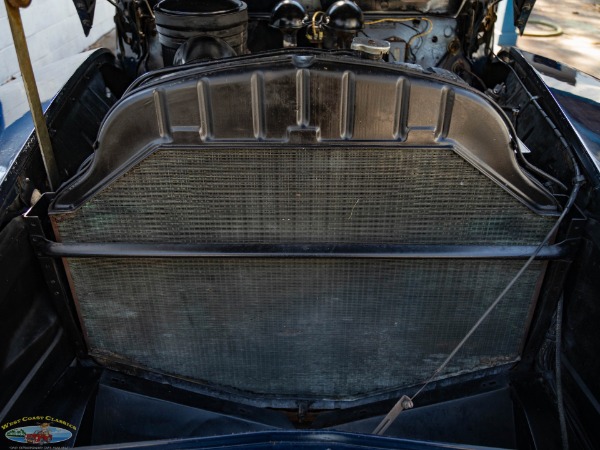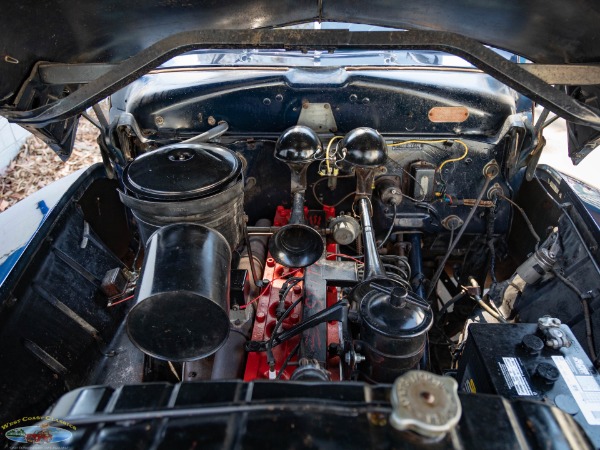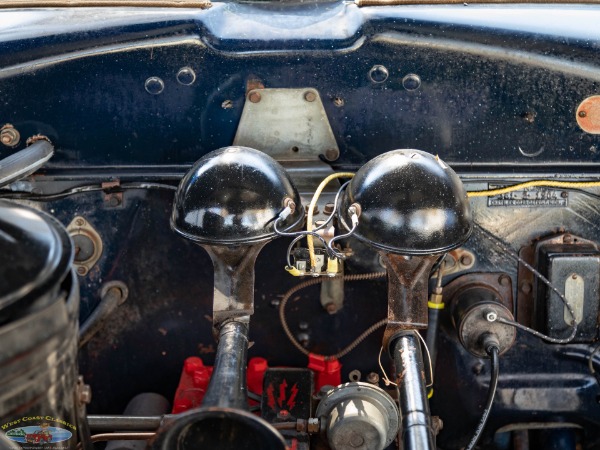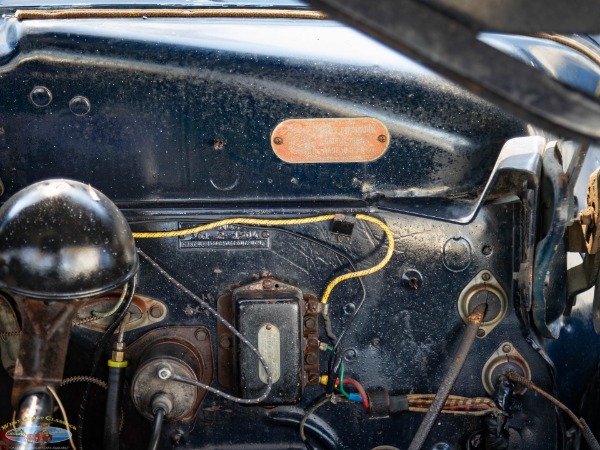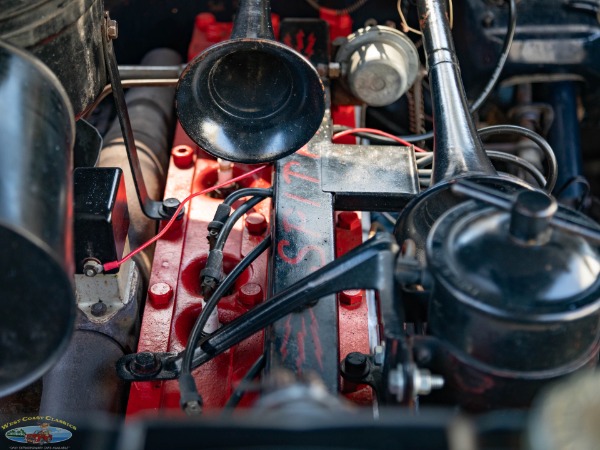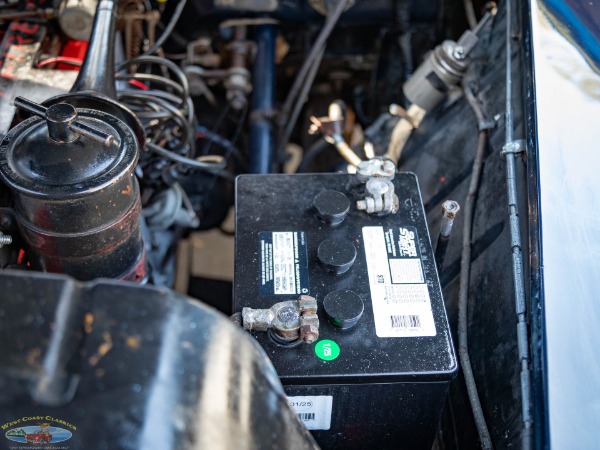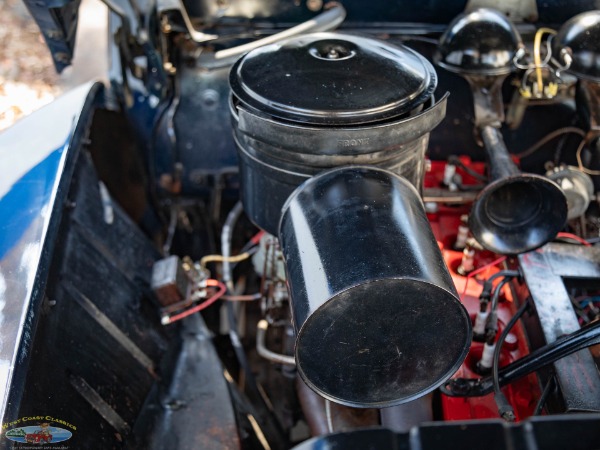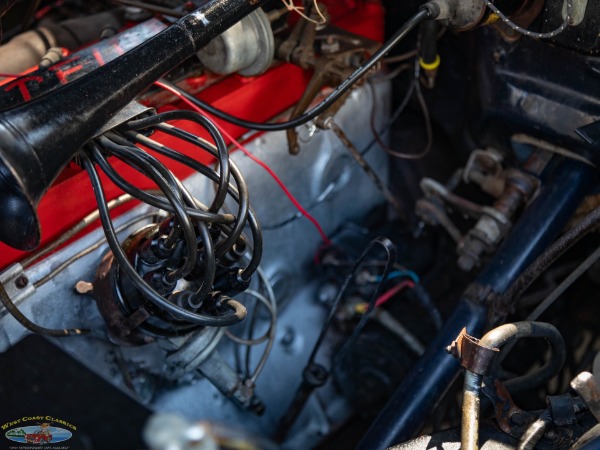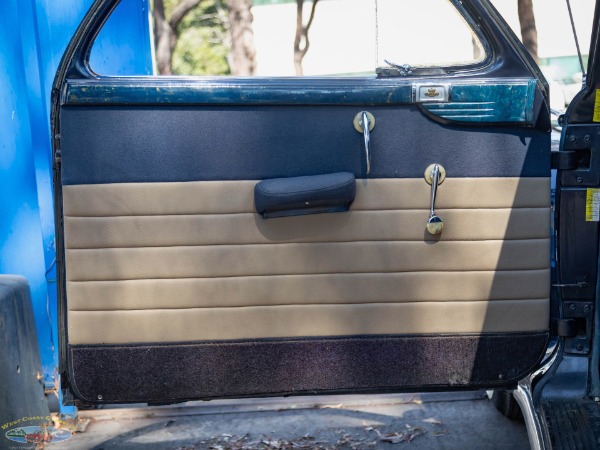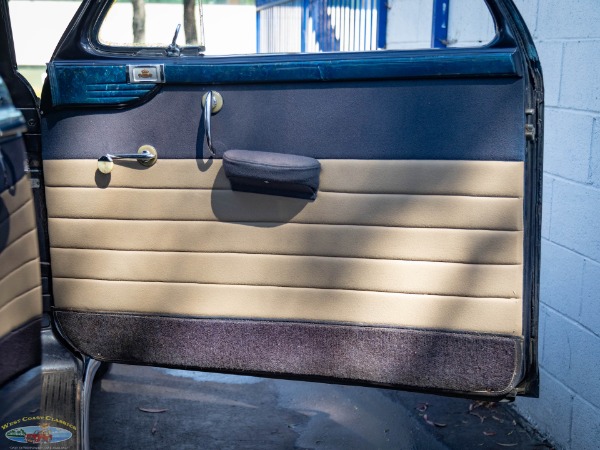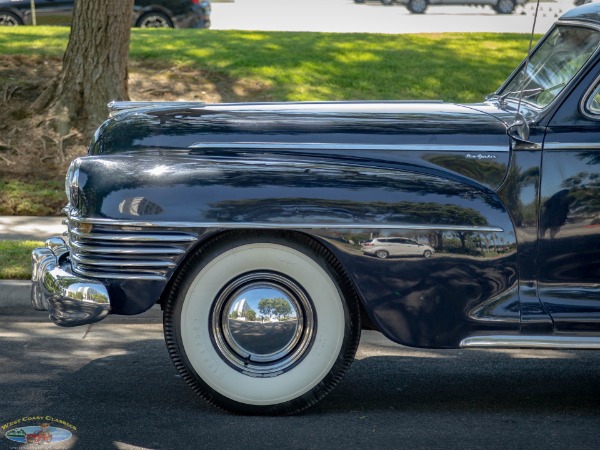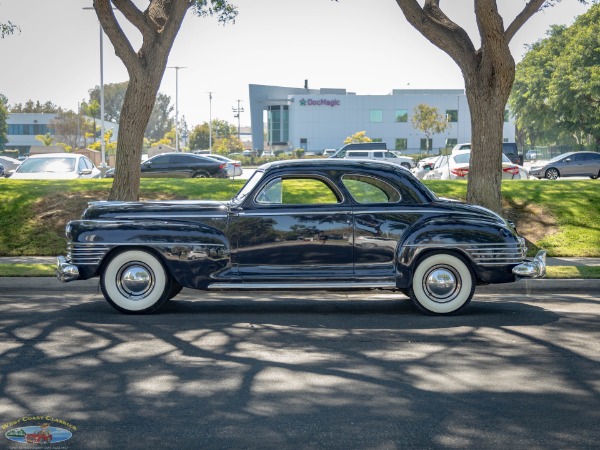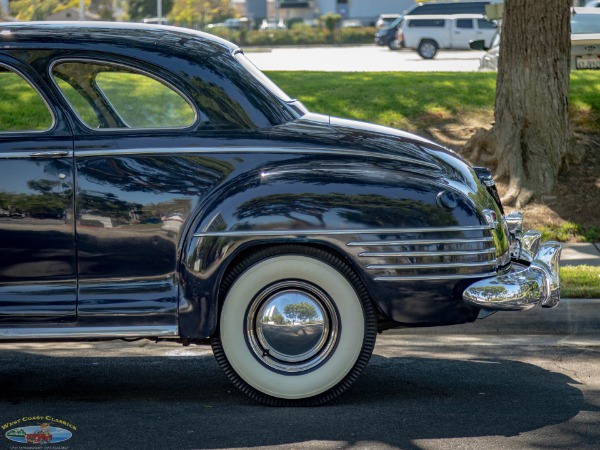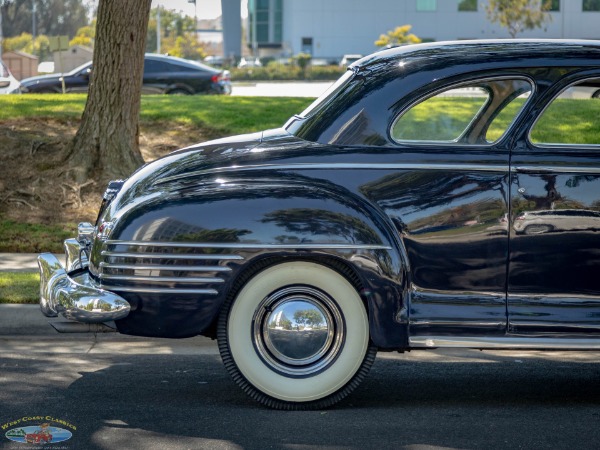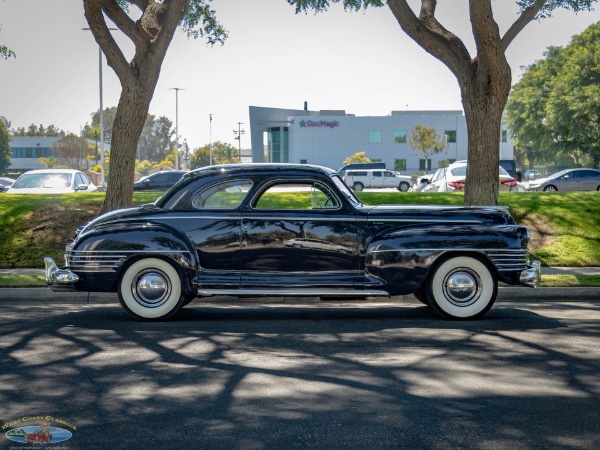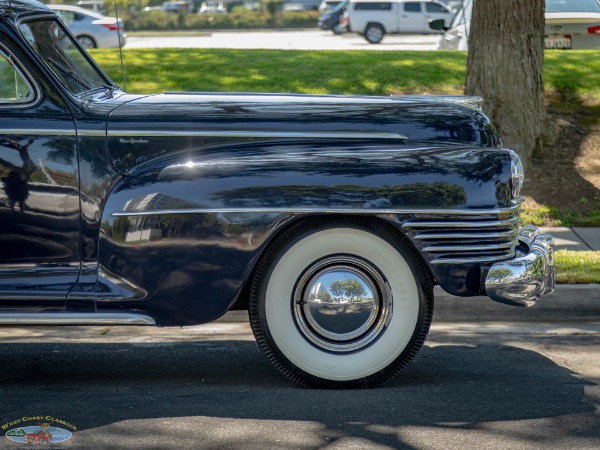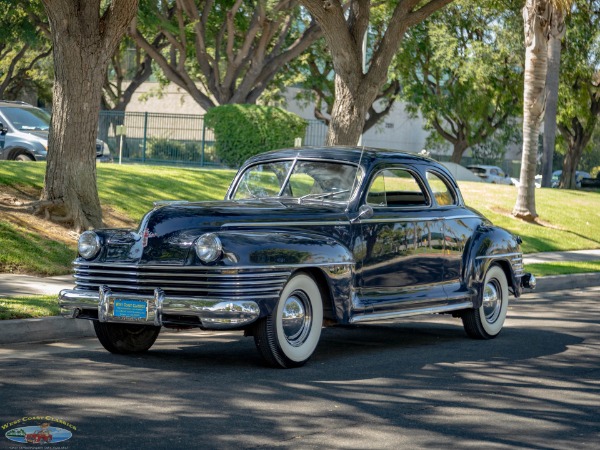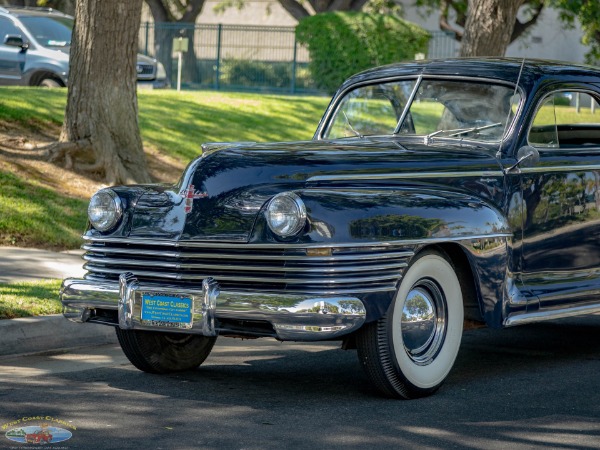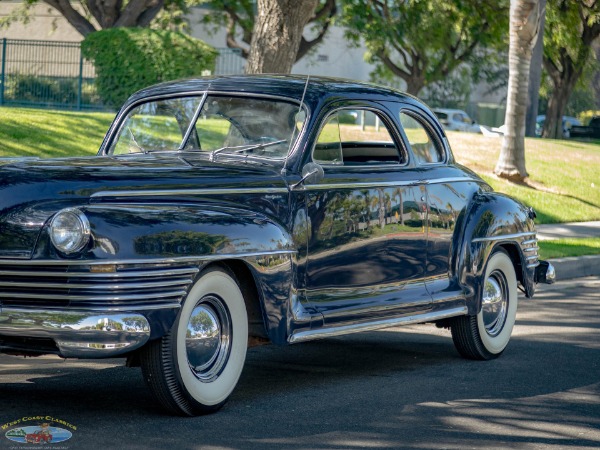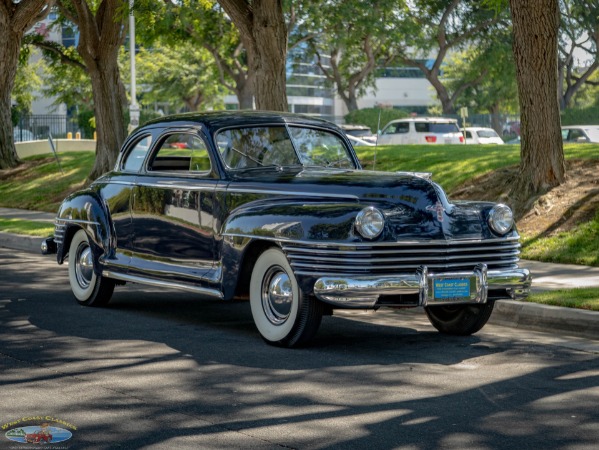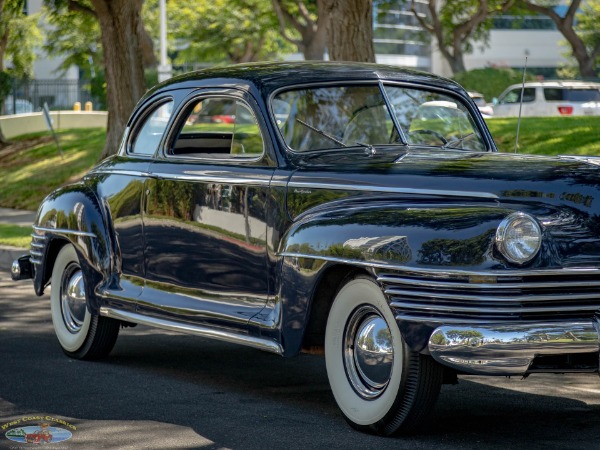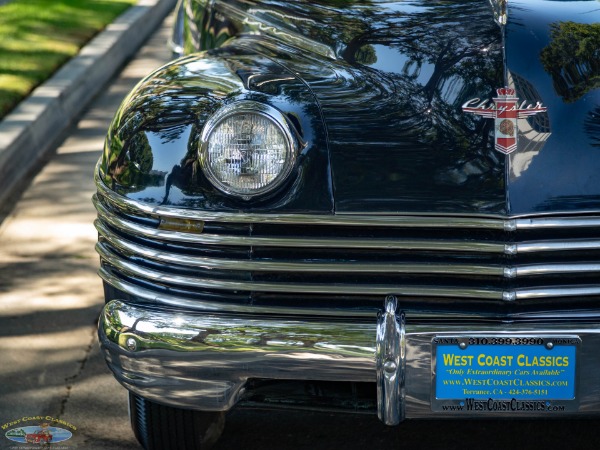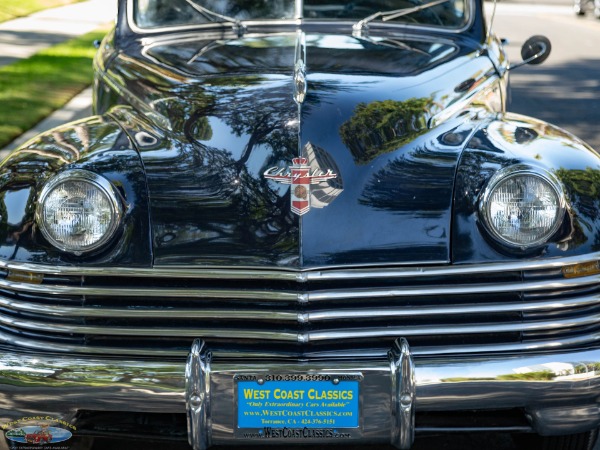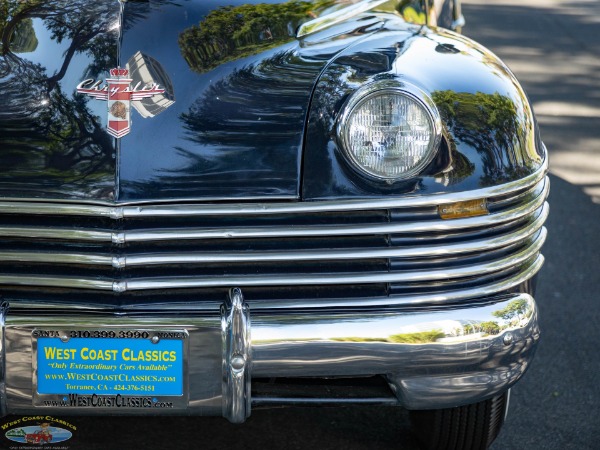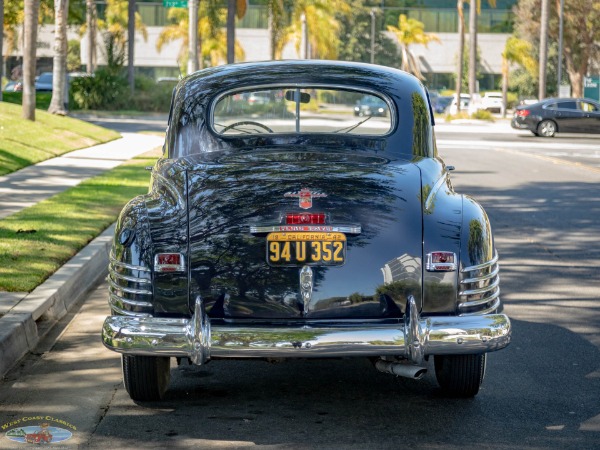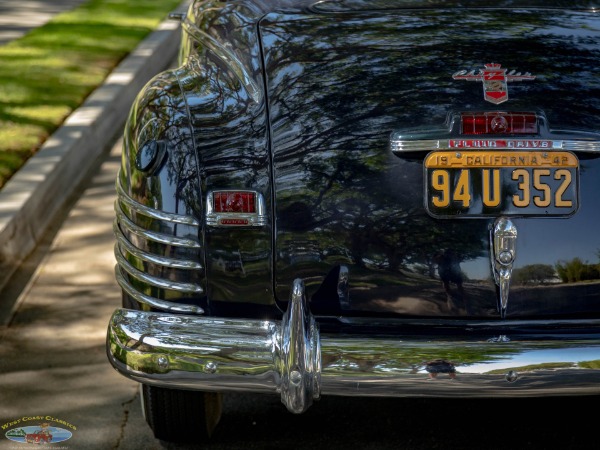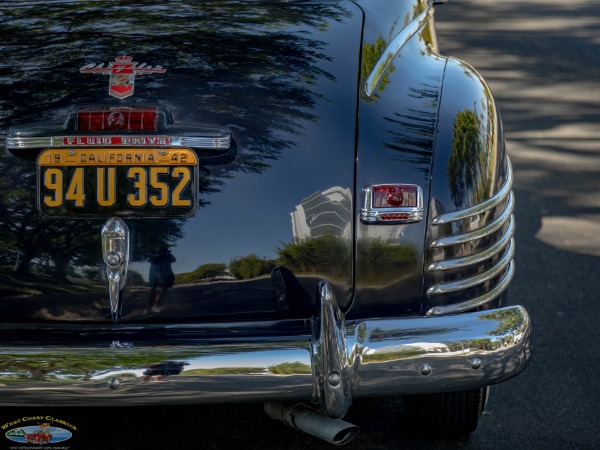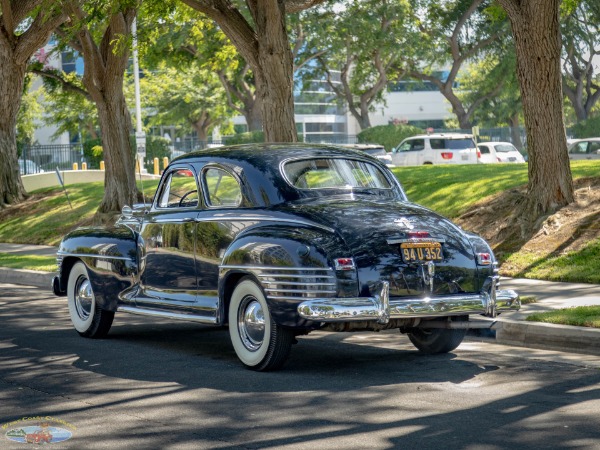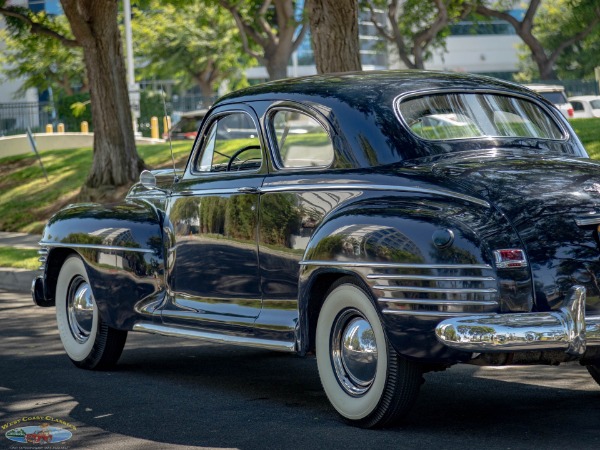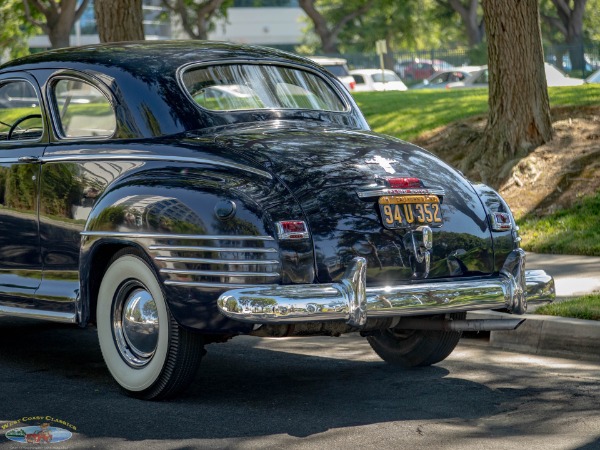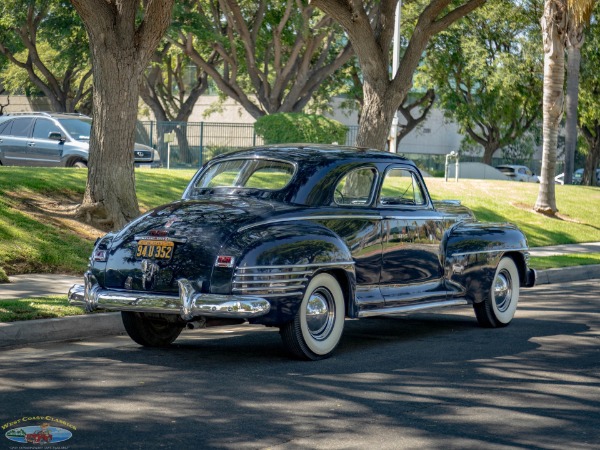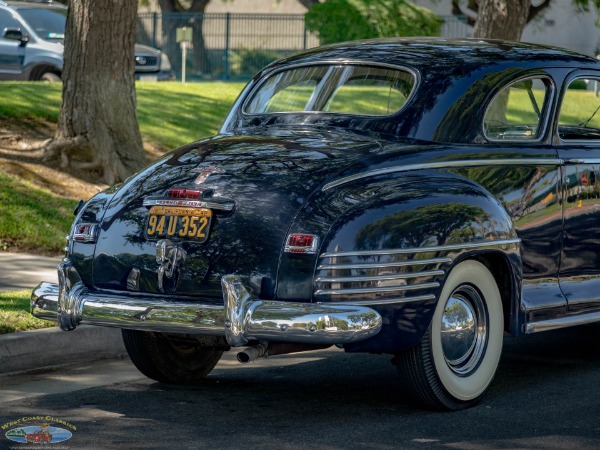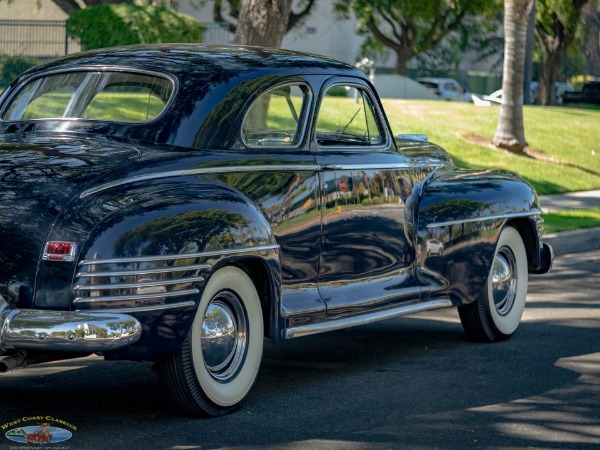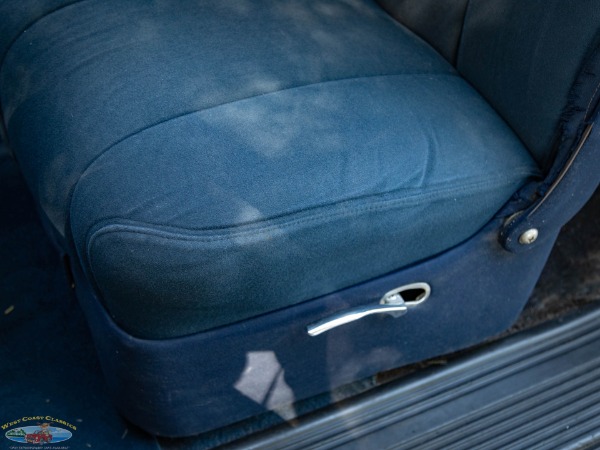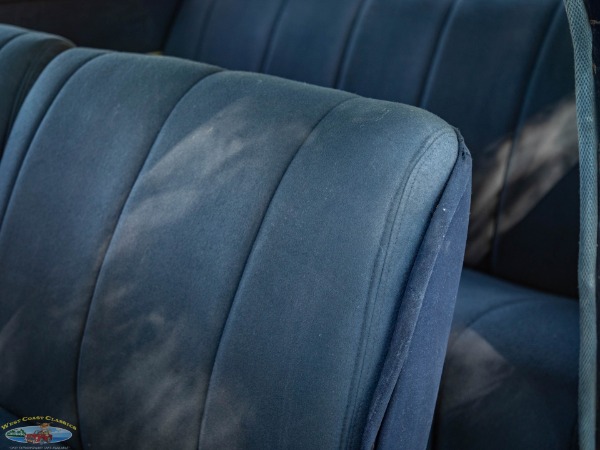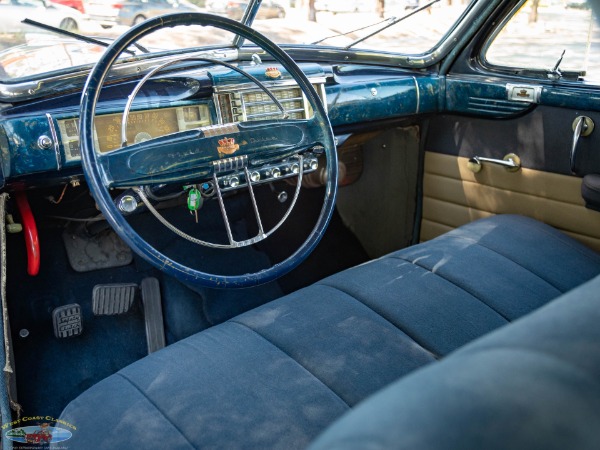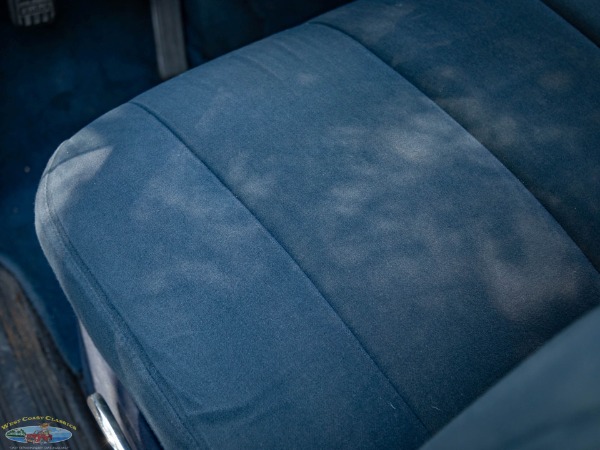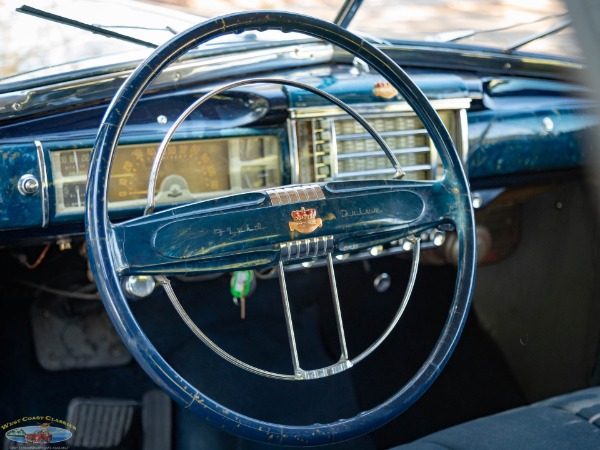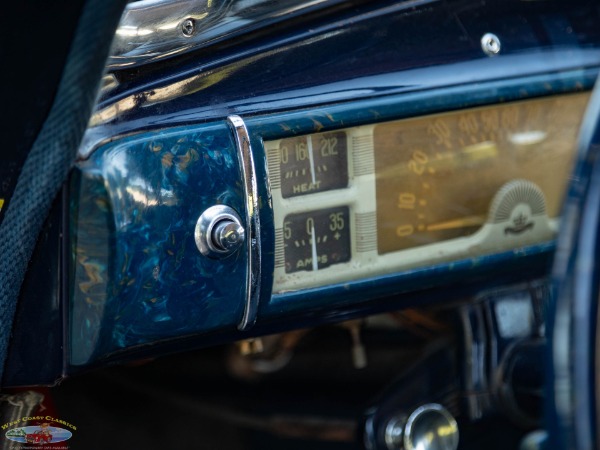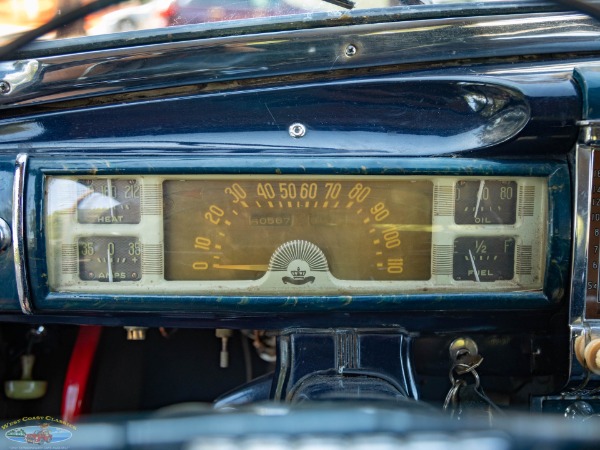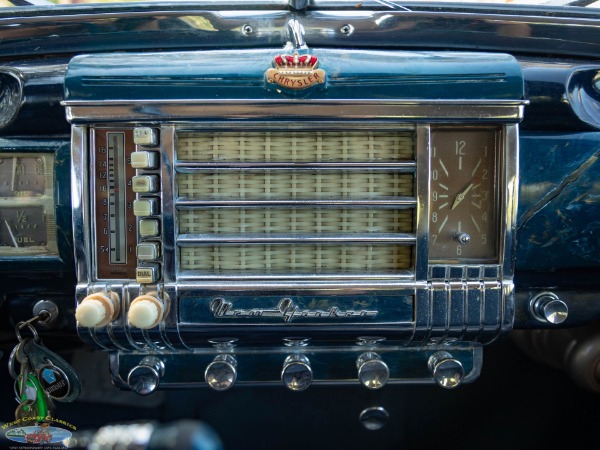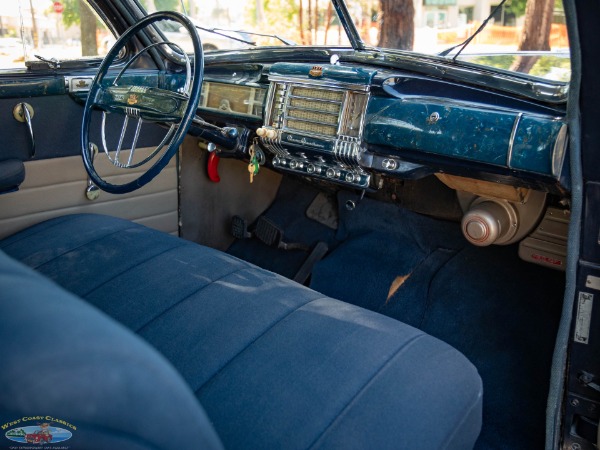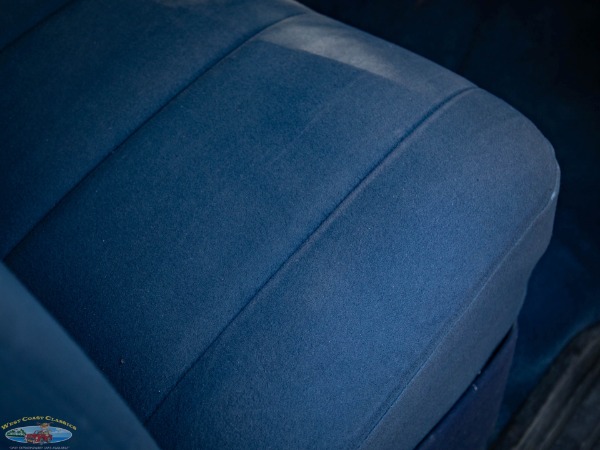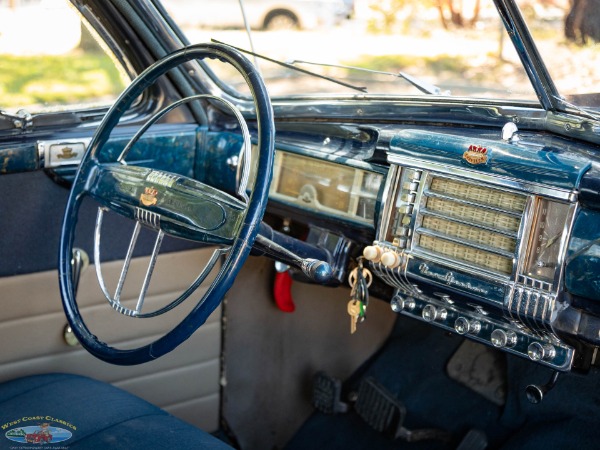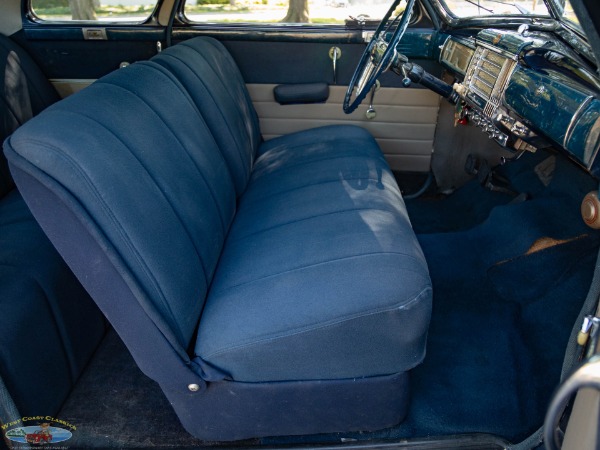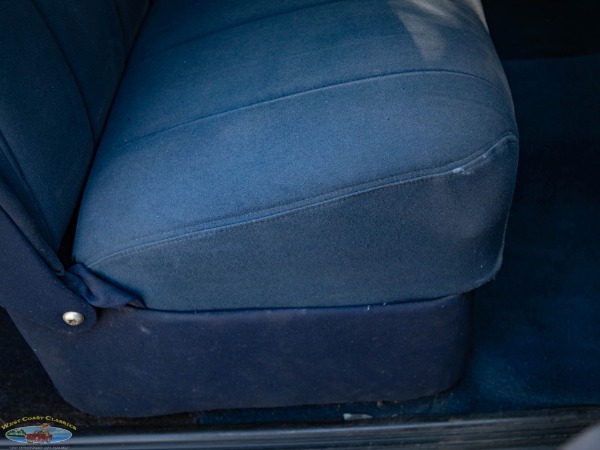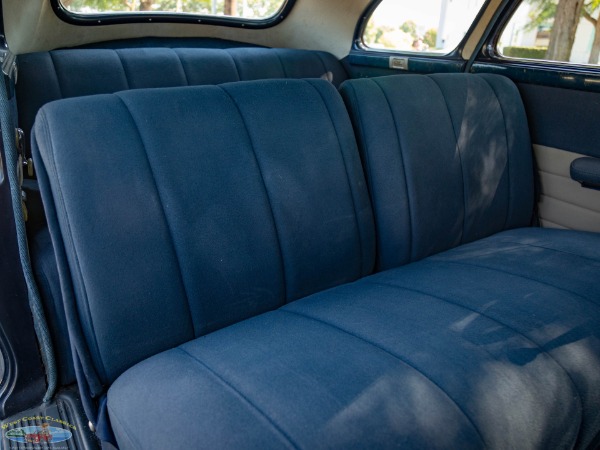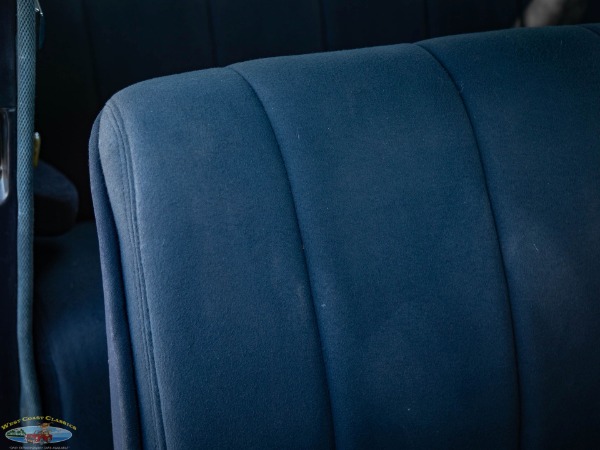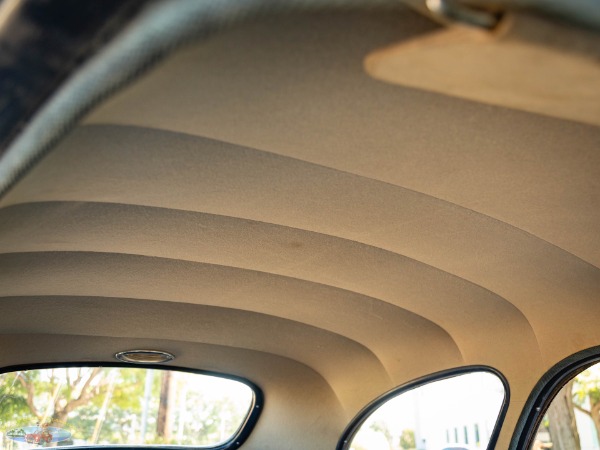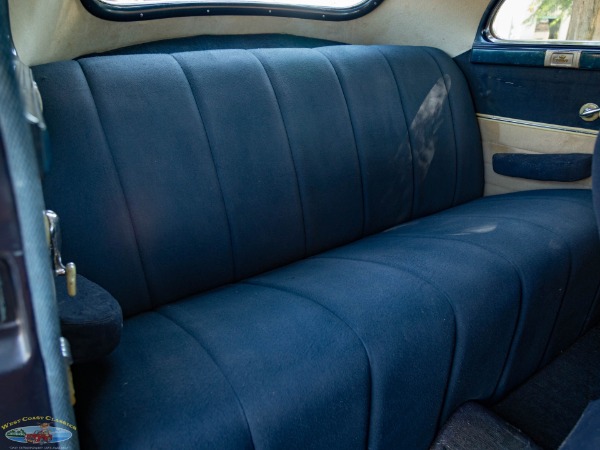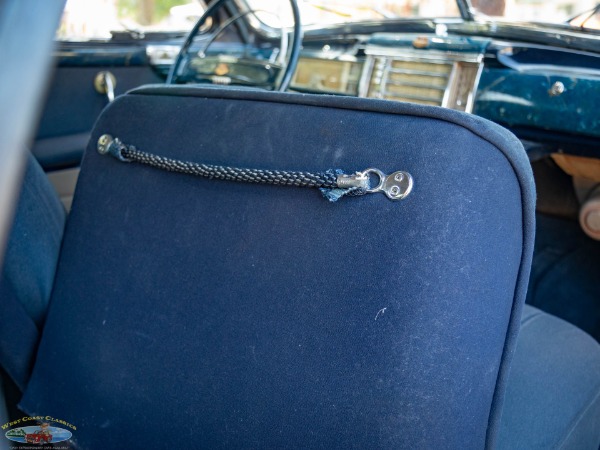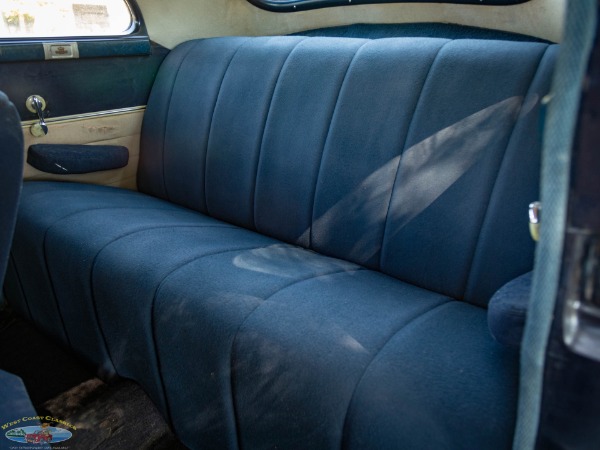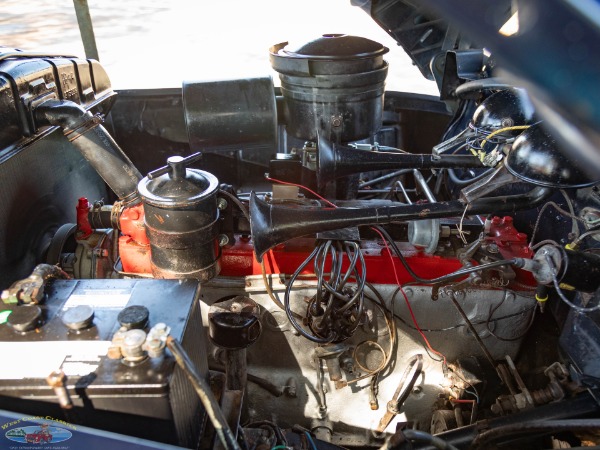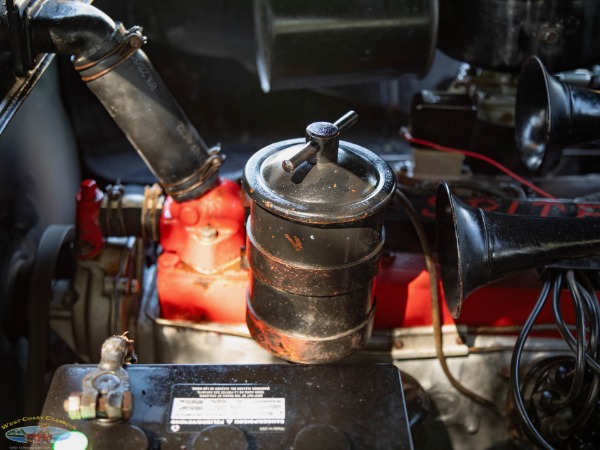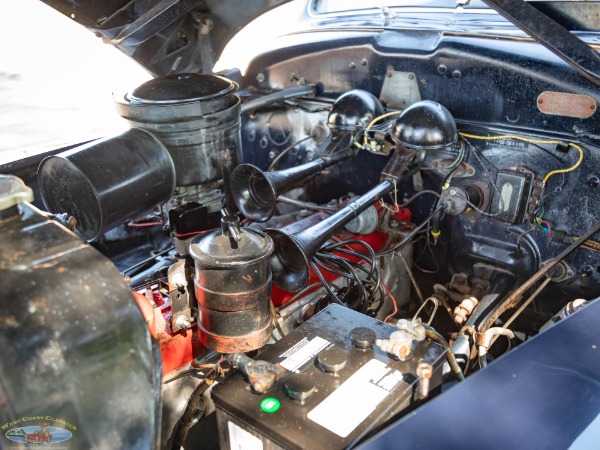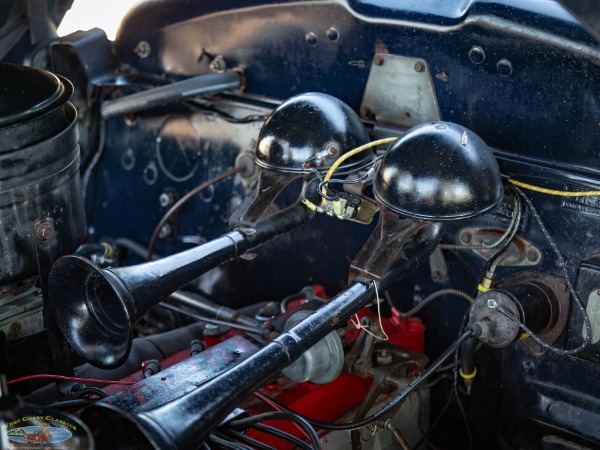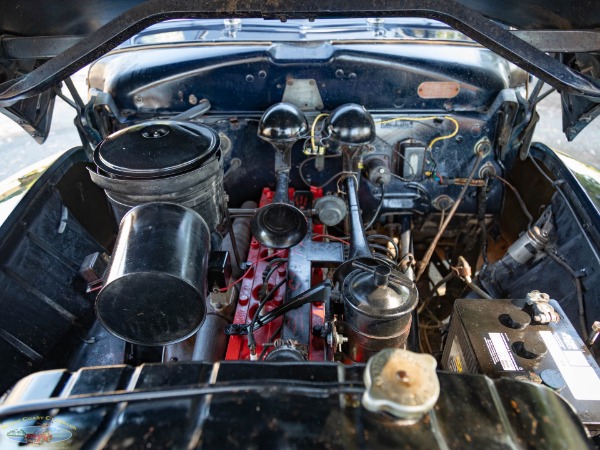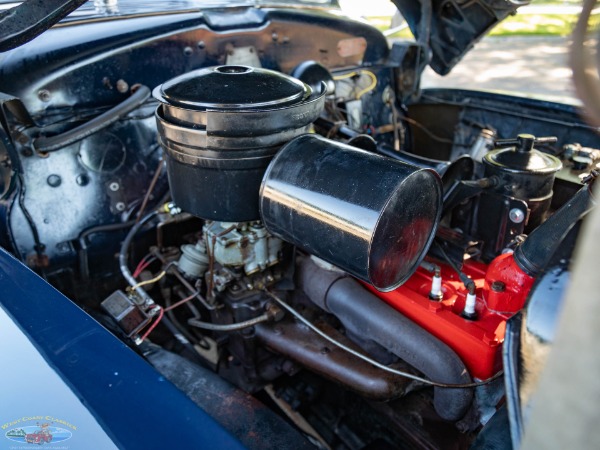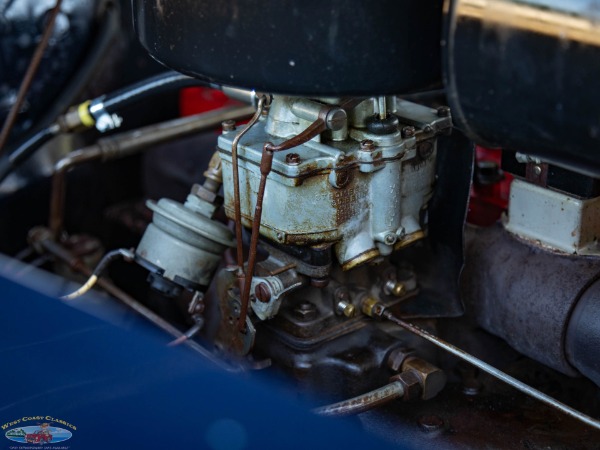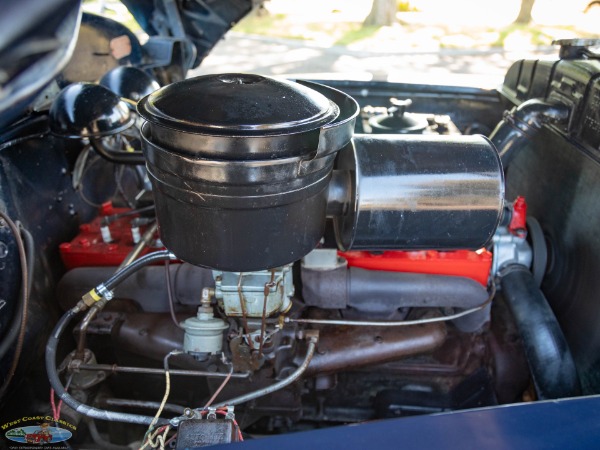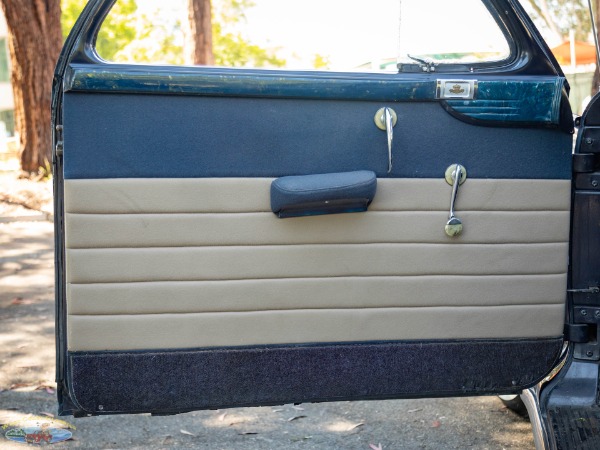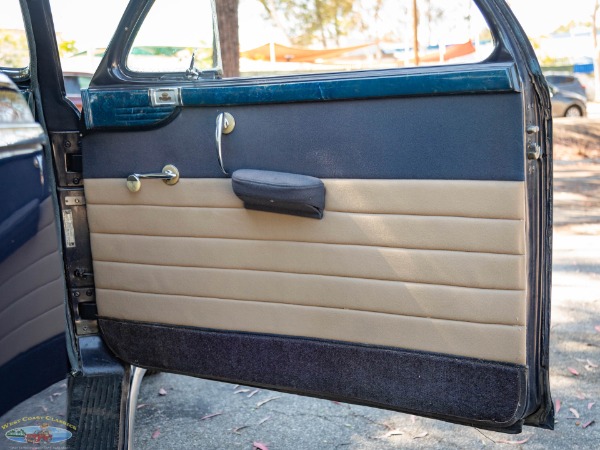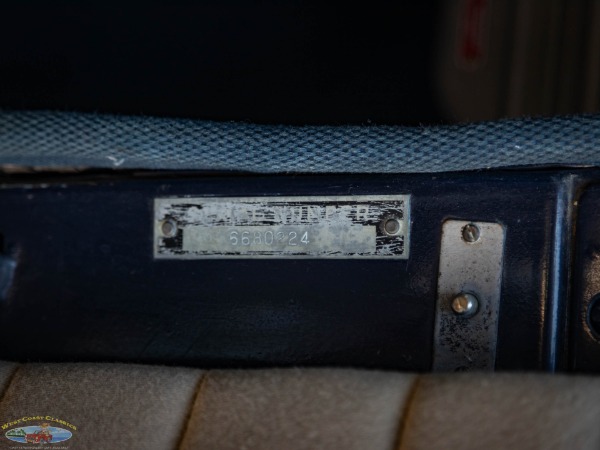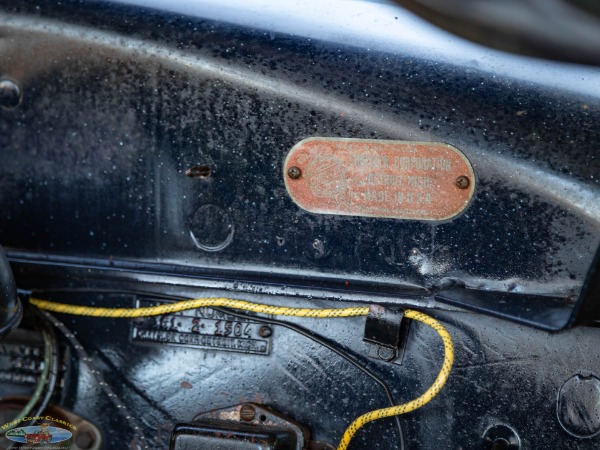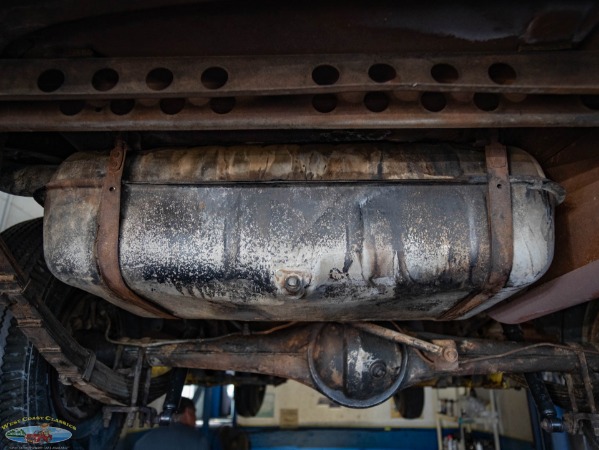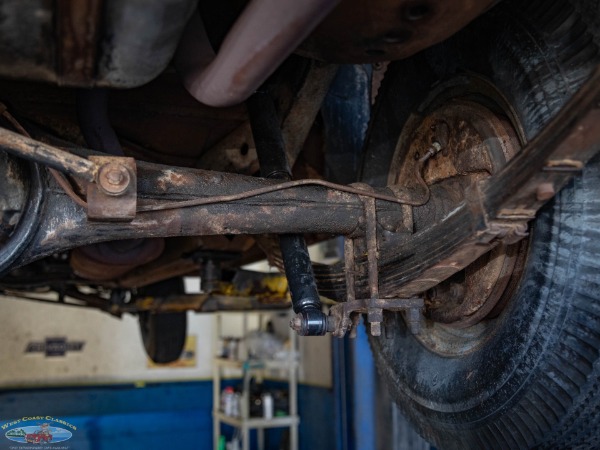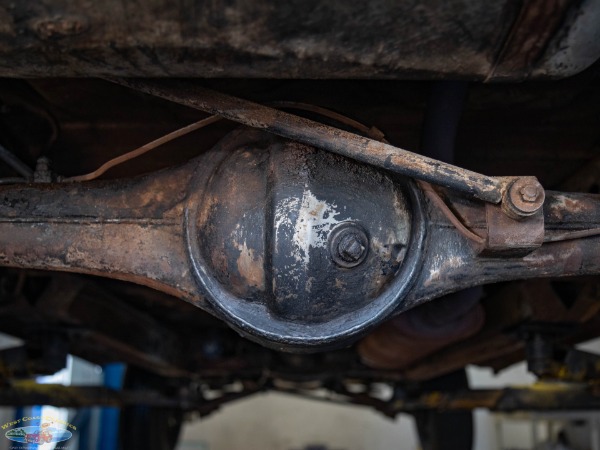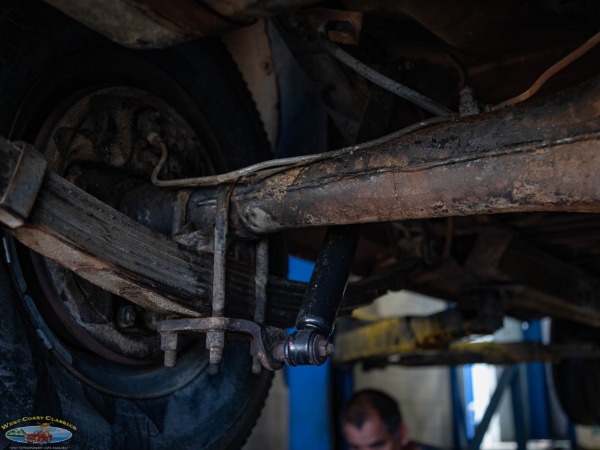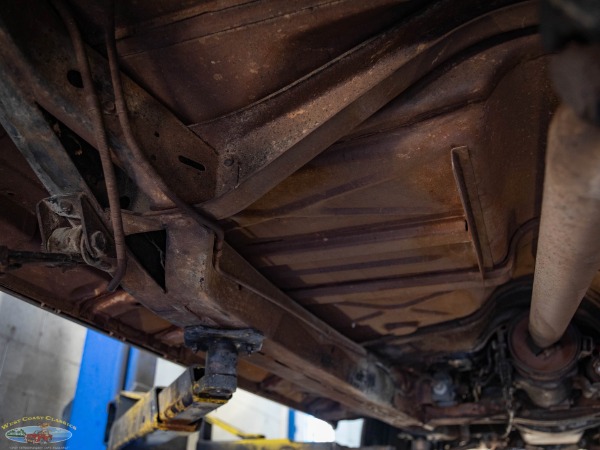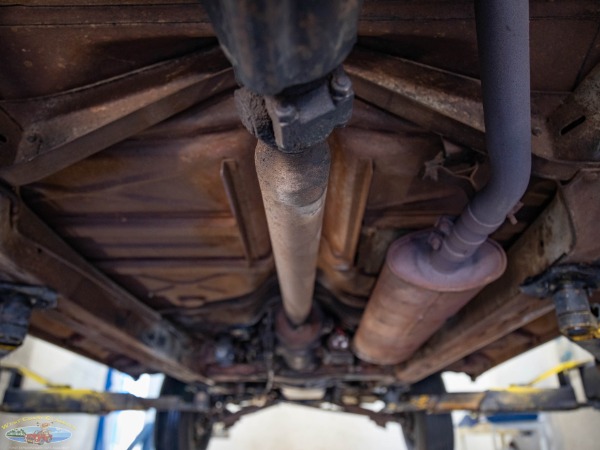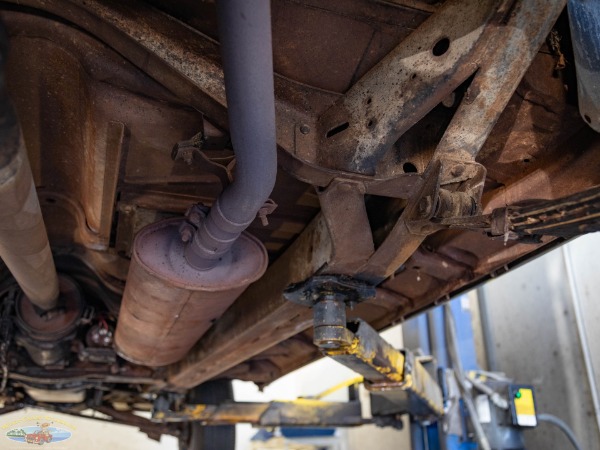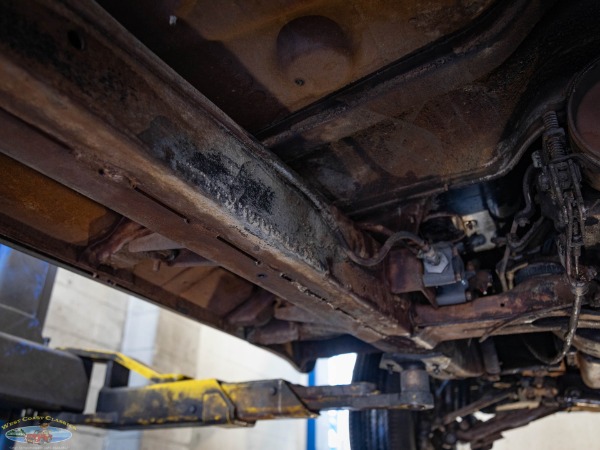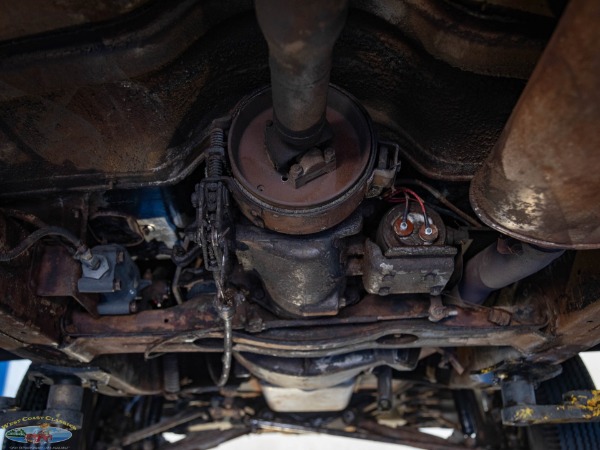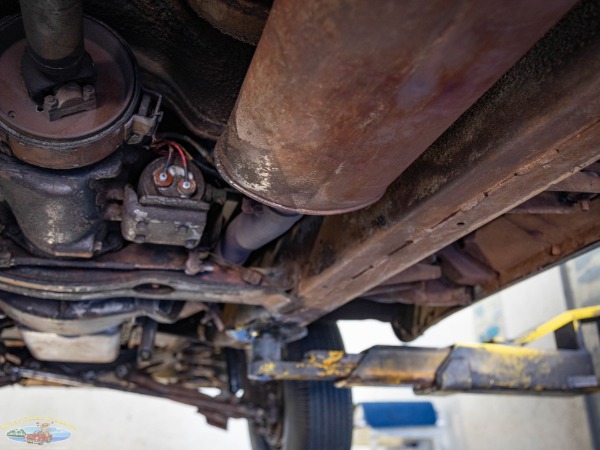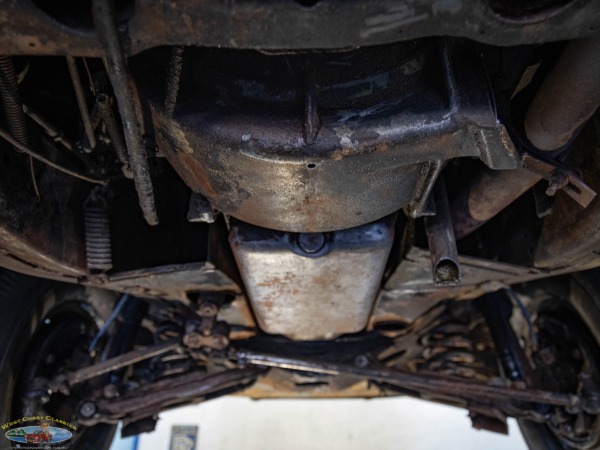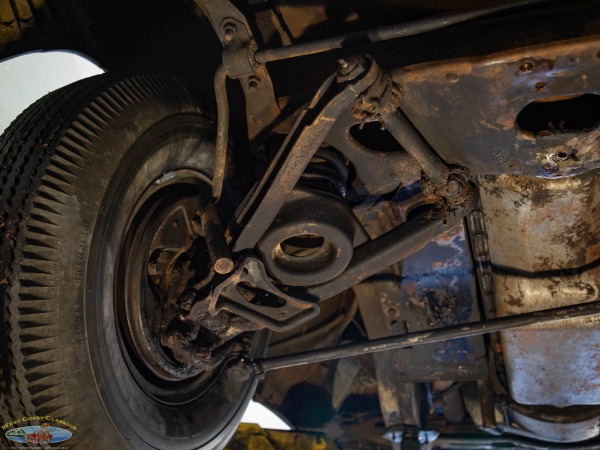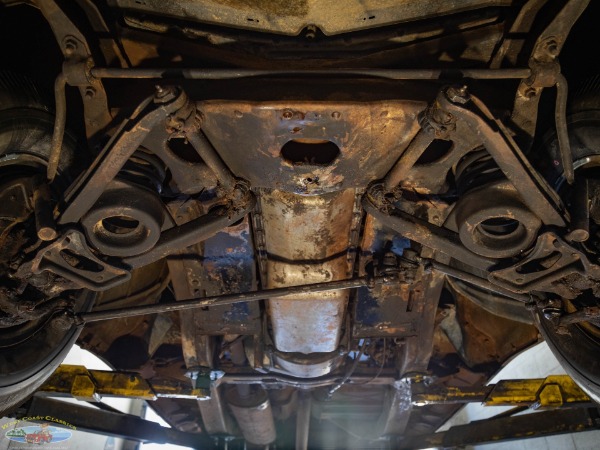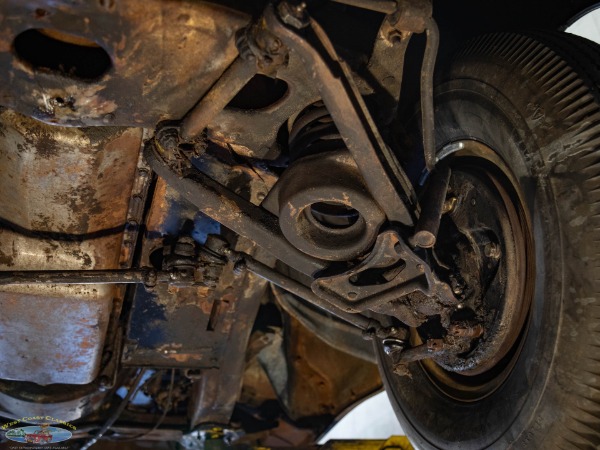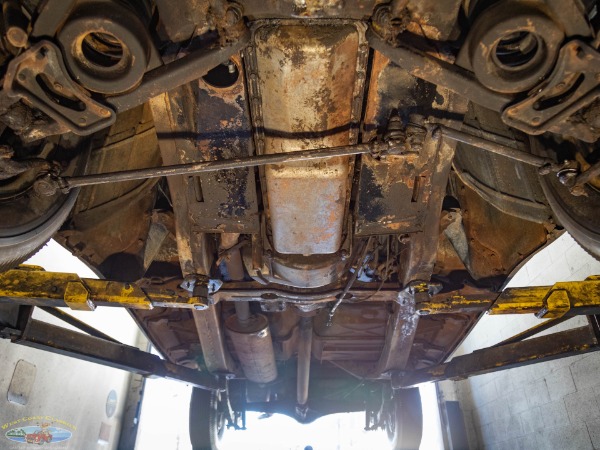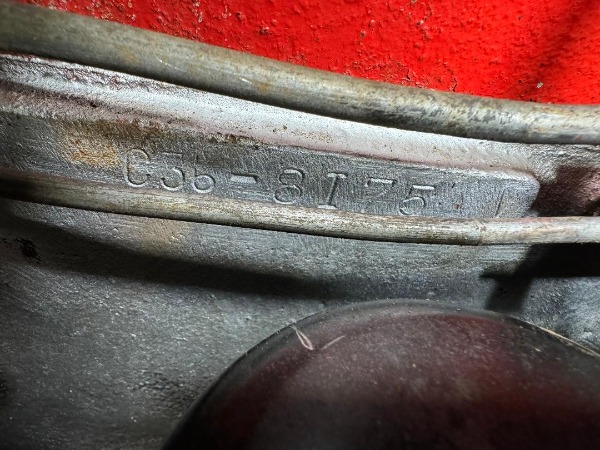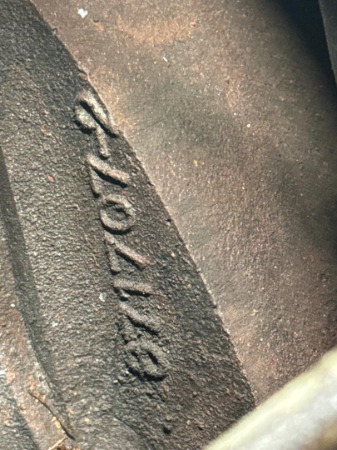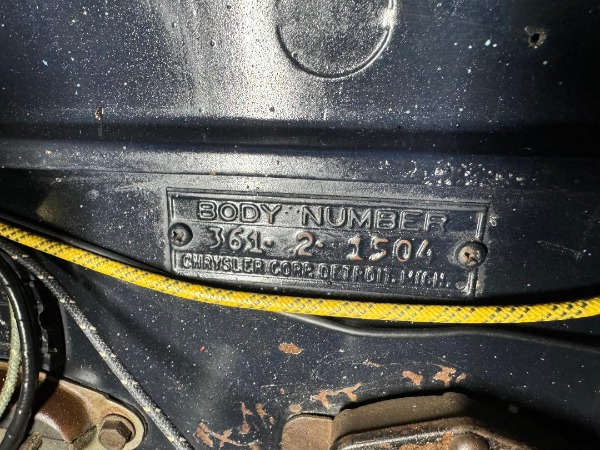West Coast Classics are proud to present this exceptional and stunning older restoration example of this completely rust and accident free 1942 Chrysler New Yorker 2 Door Club Coupe with it's reliable and virtually bullet-proof Chrysler 323.5 c.i. 'Spitfire' Straight 8 engine with a manual semi automatic 3 speed 'Fluid Drive' transmission! 1 of only 1,234 6 passenger Cub Coupes built in 1942.
A trim level named the "New York Special" first appeared on the Chrysler model lineup in 1938, with the "New Yorker" name debuting in 1939.
The New Yorker helped define the Chrysler brand as a maker of upscale models that were priced and equipped to compete against the upper-level models from it competitors.
The New Yorker was Chrysler's most prestigious model throughout most of its run. Over the decades, it was available in several body styles, including sedan, coupe, convertible, and wagon and until its discontinuation in 1996, the New Yorker was the longest-running American car.
The 1942 model year was less than half the usual length, with all civilian automotive manufacturing ending in February 1942.
This is one of the very collectible and extremely rare 1942 New Yorker Club Coupes with luxury appointments including the marbled bakelite dashboard with a detailed instrument panel and rare factory options of its day including the original radio and heater, indicating a loaded and no expense focus on basic, durable luxury by its original owners and including the following New Yorker attributes:
Fluid drive transmission
Extremely rare 1942 model year, built before the automakers switched to war production
1 of only 1,234 built
Fabulous Art Deco details
Loaded with options
Wide whitewall tires
Radio, clock and heater
As Americans abandoned rumble seats for indoor comfort, automakers began to offer occasional rear seats in their coupe models. Many of these were of the drop-down opera seat variety, with some forcing the passenger to sit sideways. Chrysler Corporation broke new ground in 1939 with a special body style built by Hayes Body Corporation, of Grand Rapids, Michigan. This body style, called the Club Coupe, was also offered by DeSoto and Dodge, and it had a full-width front-facing rear seat.
The Hayes Coupe was offered for only one year, but the seating pattern won immediate acclaim, so, from 1940 on, a Club Coupe with seating for six was now part of the Chrysler line. The three-passenger business coupe used the same body, with a large cargo space in place of the rear seat.
The Club Coupe appeared in all Chrysler series except Imperials, and it carried forward into the abbreviated 1942 model year with this being one such rare example with the desirable New Yorker trim and attributes.
Auto sales surged in 1941, as clouds of war gathered in Europe. Sensing that auto manufacture might be suspended if the United States became involved, consumers bought new cars when and if they could.
Their predictions were confirmed on December 7, 1941, with the bombing of Pearl Harbor. Pre-war contingency planning then turned to war production, and all new car manufacture was halted by February 1942.
As a result, production of the Club Coupe, which exceeded 22,000 in 1941, fell to just 3,919 in the 1942 model year, with 1,713 of them being Windsors, the more highly trimmed of six-cylinder Chryslers.
This 1942 New Yorker Club Coupe is very handsome and attractive and fully equipped with Fluid Drive, a radio, a heater, an electric clock, whitewall tires, wheel trim rings, rear fender skirts, and dual exterior mirrors. The cloth upholstery is original spec, as is the carpets and dashboard plastic. The brightwork is all very good quality, and the car is a wonderful driving older restoration that performs as good as it looks with recent extensive servicing including a full engine tune up, brake overhaul including master cylinder and wheel cylinders.
The 1942 Chryslers featured a new full-width, thin-bar grille, which set them apart from earlier and later models, particularly the post-war cars, which adopted a very heavy-set mesh grille. The beauty of its design and the quality of this particular cars older restoration, combined with its rarity, make this an extraordinarily desirable car.
Due to World War II, 1942 Chrysler production was cut short, ending completely in February 1942. The shortened production run, which included a "blackout" trim style, makes 1942 models rare and some of the most highly sought-after collector cars of its vintage today.
The main reasons for this being the Art Deco styling with Chrysler's pre-war styling noted for its sleek, aerodynamic design with prominent horizontal grilles and integrated fenders that hinted at the later Ponton-style bodies.
Many models featured Chrysler's Vacamatic Fluid Drive, a vacuum-assisted, semi-automatic transmission. Paired with a manual transmission, the fluid coupling eliminated the need for a clutch pedal in most driving situations.
The Chrysler line up of models of 1942 were as follows:
The Windsor, being the more luxurious of Chrysler's two six-cylinder model line with a 250.6 cu. in. L-head inline-six engine producing 120 horsepower and available as coupes, sedans, and convertibles.
The Saratoga (Series C-36K) was a higher-tier model line with a more powerful engine and exclusive interior appointments with a 323.5 cu. in. Spitfire Straight-Eight paired with Fluid Drive, the straight-eight engine was a refined and powerful choice for its time.
The New Yorker (Series C-36N), positioned near the top of the Chrysler lineup, the New Yorker shared a similar straight-eight engine and features with the Saratoga but offered its own styling along with the 323.5 cu. in. Straight-Eight. The 1942 model run for the New Yorker series was very limited, especially in the Club Coupe or Business Coupe body styles.
The Imperial (Series C-36), the top-of-the-line Chrysler, the Imperial included luxury models like the eight-passenger Crown limousine with the same 323.5 cu. in. Straight-Eight as the New Yorker but which featured the longest wheelbase and most luxurious appointments, such as wool broadcloth upholstery and a chauffeur's divider window. The production of the Crown Imperial was particularly limited in 1942, making it an extremely rare car today.
The C26 series, was the first New Yorker to be considered a standalone model rather than as an Imperial version. It also saw the introduction of Fluid Drive, a fluid coupling between the engine and the clutch. It featured an independent front coil suspension and a beam axle in the rear. The only transmission available was the basic three-speed manual.
Lightly redesigned bodies were introduced for 1941, with the Business Coupe now being a three-window design. The bodies were all marginally wider and lower, with increased glass surfaces. Another new model was the Town Sedan with the rear doors hinged at the forward edge of the doors.
With America entering World War II on 11 December 1941, all automobile production ended at the beginning of February 1942. Thus, the 1942 model year was roughly half the usual length. Cars built after December 1941 also had blackout trim.
The 1942 Chryslers were relatively modern, with a design that heralded the post-war Ponton style with fenders more incorporated into the bodywork. The grille consisted of five horizontal chrome bars wrapped around the front, reaching to the leading edge of the front wheel well.
The Chrysler New Yorker with the semi automatic Fluid Drive transmission delivered modern style performance in the form of a large and heavy 5 passenger coupe and this is a now very rare and desirable and collectible example of one of America's premier early post war cars.
Of all the body-styles available the Club or Business Coupes are widely considered by enthusiasts the most desirable, built with an eye towards style instead of practicality, with the small passenger compartment allowing for one of the most attractive and distinguished roof-lines of any car of it's day and proved to be a significant influence in the coming decades era of larger and even more imposingly styled cars.
This particular New Yorker Club Coupe has been beautifully preserved and should be considered an older restoration that would prove a wonderful addition to any post war collection.
It is finished in the always striking classic Dark Blue color with an original matching 'Dark Blue' specification broadcloth wool interior.
Factory options included; 'Comfort Master Heater', 8 tube radio, directional signals, electric clock, windshield wipers, luggage compartment light, 'Safe Guard' hydraulic brakes, small hubcaps, etc.
The car was professionally restored some years ago obviously with no expense spared, before being purchased by a renown private collection. The car obviously now shows some signs of age now in the carpet and a couple of minor dings in the stainless bright work which is otherwise in wonderful condition.
The original spare wheel is in it's rightful storage place in the trunk. The 323.5 cubic inch Spitfire straight 8 cylinder engine is extremely strong and powerful and this particular car drives magnificently after its recent full servicing - must be driven to be fully appreciated - drives straight as an arrow with no strange road wobbles, shakes or rattles.
This is a very rare opportunity to own a beautiful and supremely rare older restoration with superb attention to detail of a great daily driving example, and obviously never abused (and oozing pride of ownership since it's remarkable restoration), 1942 Chrysler C36 New Yorker 2 Door 6 Passenger 323.5 c.i. Spitfire Eight Cylinder Club Coupe.





